Aratinga Tours - Costa Rica April 2022 Part 1
We have been fortunate to travel to Costa Rica, Guatamala, and Panama on previous Central America trips. These were excellent tours and we both really enjoyed the beautiful countries and the friendly residents. Each tour offered at least some opportunities for wildlife photography. However, I wanted to plan a trip that was dedicated to wildlife photography. Two weeks of dawn to dark wildlife photography was not super high on Becky's bucket list, but she was up for an adventure. I found what I was looking for with Aratinga Tours. They offer a 2 week all-inclusive tour that features some of the best photo lodges, locations, and guides. I wanted to try and squeeze the trip in during April, before the start of the rainy season in May. I contacted Pieter Westra, the owner of Aratinga Tours www.aratinga-tours.com and attempted to book his featured wildlife photography tour on short notice. Pieter was unable to book us in all the locations, but countered with an amended schedule, which included at least some time at each advertised location and some nicely upgraded lodges. We accepted the amended itinerary and booked flights out of San Francisco.
We arrived in Costa Rica on the evening of April 6th and were met at the airport by an english speaking representative of Aratinga Tours. He transported us through downtown San Jose to a small boutique hotel, Hotel Buena Vista. The hotel is located in a small coffee plantation in the hills north of San Jose. Our room offered excellent views of the city.
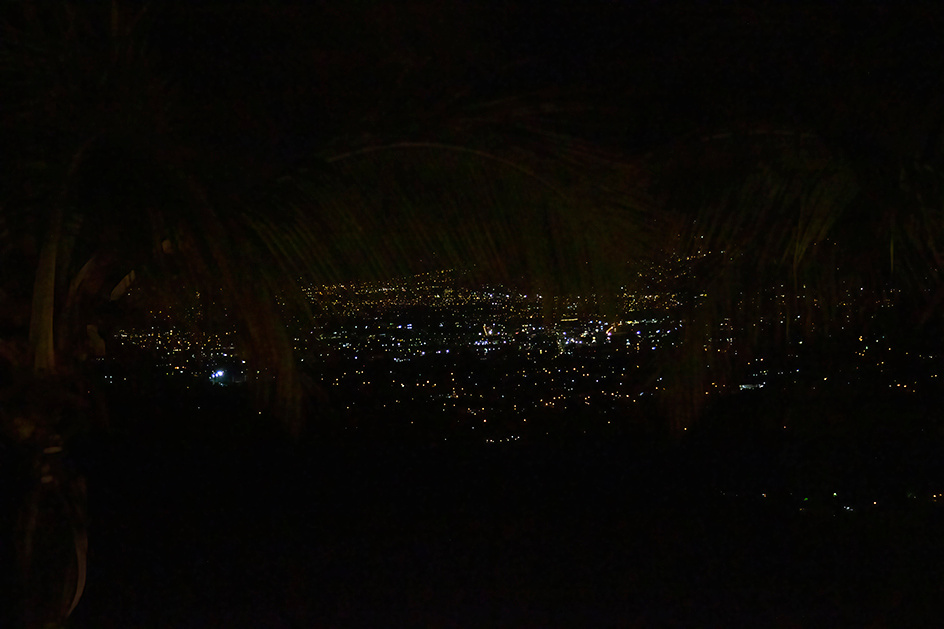

The view from our balcony at Hotel Buena Vista
I was up with the sun the next morning and explored the hotel garden and coffee plantation. Difficult photography, but I did start adding to my species list. Most were common species like clay-colored thrush, rufous-tailed hummingbird, great kiskadee, red-billed pigeon, white-winged dove, brown jay, scarlet-rumped tanager and a few others. After a leisurely breakfast, we met with a representative of Alamo car rentals in our hotel lobby. We had selected a self driving tour, although Aratinga Tours also offers tours with dedicated drivers. The cost of the rental car and full insurance on it was included in the cost of the tour. Also included was a phone containing a wifi hotspot and a navigation program. Highway signage and street addresses are generally lacking in Costa Rica, so the nav program gave us confidence we could find our way around without getting lost. We also received very detailed turn by turn written directions, which included travel times, and distances. These written directions were generally excellent and we really only used the navigation system to traverse the major cities. The wifi hotspot allowed us to keep in touch with family at home through Facebook Messenger.
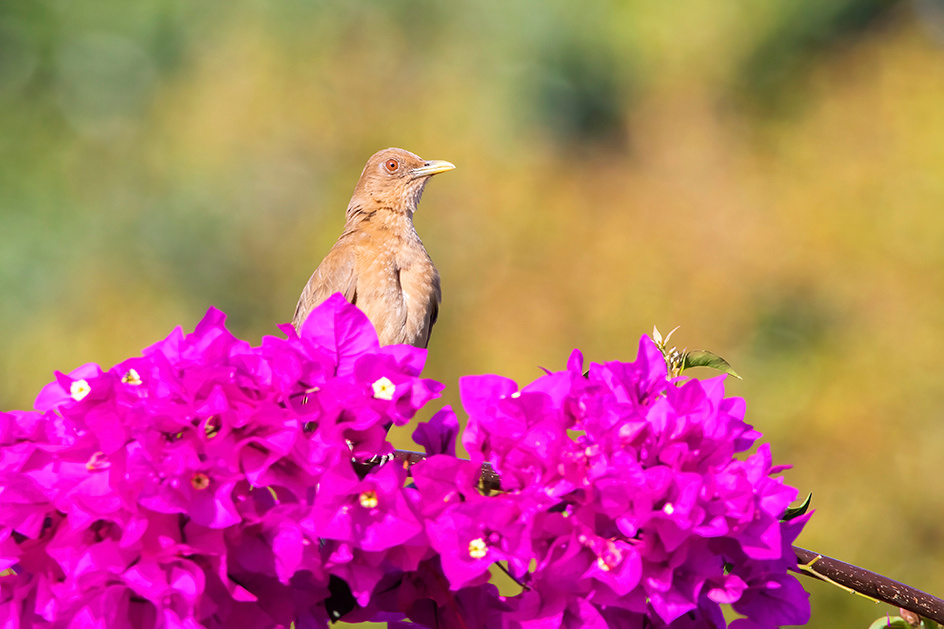

Clay-Colored Thrush. The national bird of the country of Costa Rica


Rufous-Tailed Hummingbird - Probably the most widespread and common hummingbird in Costa Rica.
The next stop on our itinerary was La Paz Waterfall Gardens (Alajuela Province, Sarapiqui) on the eastern slope of Poas Volcano. These gardens/zoo are a major Costa Rican tourist attraction which includes four waterfalls, over 100 species of animals, and 3.5 kms of cloudforest hiking trails. The park grounds/garden are beautifully maintained. Photo opportunities included hummingbird gardens, a sepenterium, a frog exhibit, a butterfly exhibit, an a large walk through aviary which contained birds from all over Costa Rica including some we were unable to see elsewhere. Exhibits containing sloths and monkeys were popular. My favorite exhibit was the big cat exhibits which included jaguars, mountain lions, margay, and ocelots in very lifelike setting. This stop was an excellent introduction to the biodiversity of Costa Rica. Photography was difficult, but I was able to get a few keepers. I kept several photos of hummingbirds on feeders. I normally try to capture wildlife in natural setting, but many of the hummingbirds were only observed on the feeders at this one location. We ended up spending about 2.5 hours at the garden (including time shopping for souvenirs for our granddaughter (Piper Magnolia).

 Gray-Headed Chachalaca
Gray-Headed Chachalaca
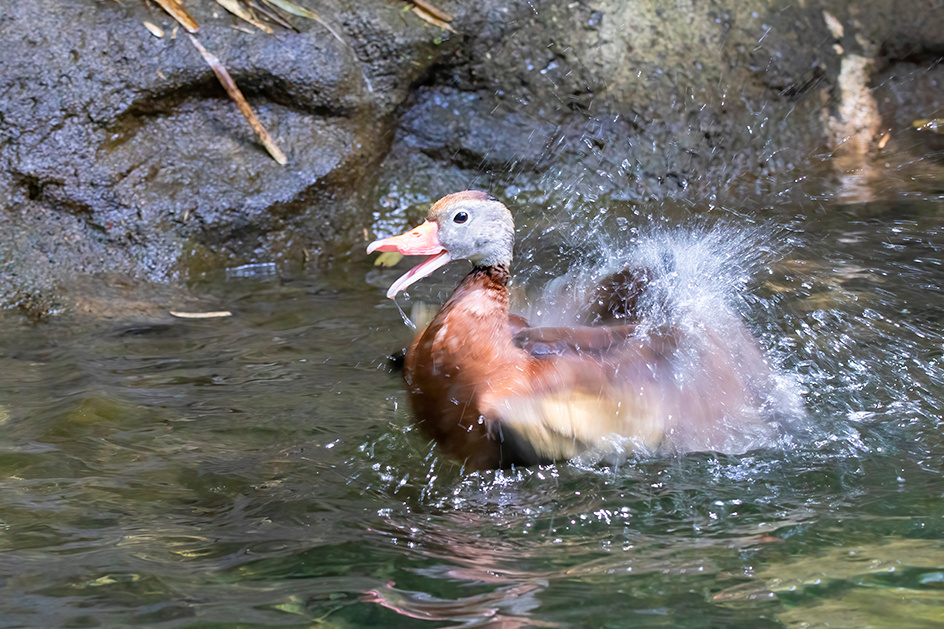
 Black-Bellied Whistling Duck bathing.
Black-Bellied Whistling Duck bathing.
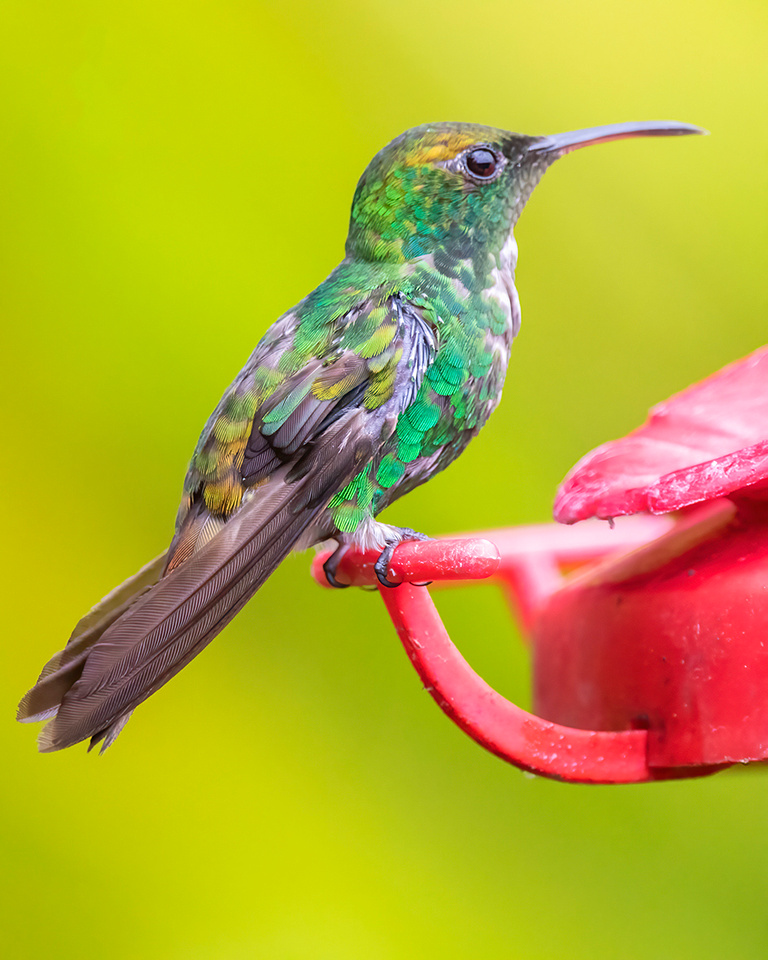

Coppery-Headed Emerald
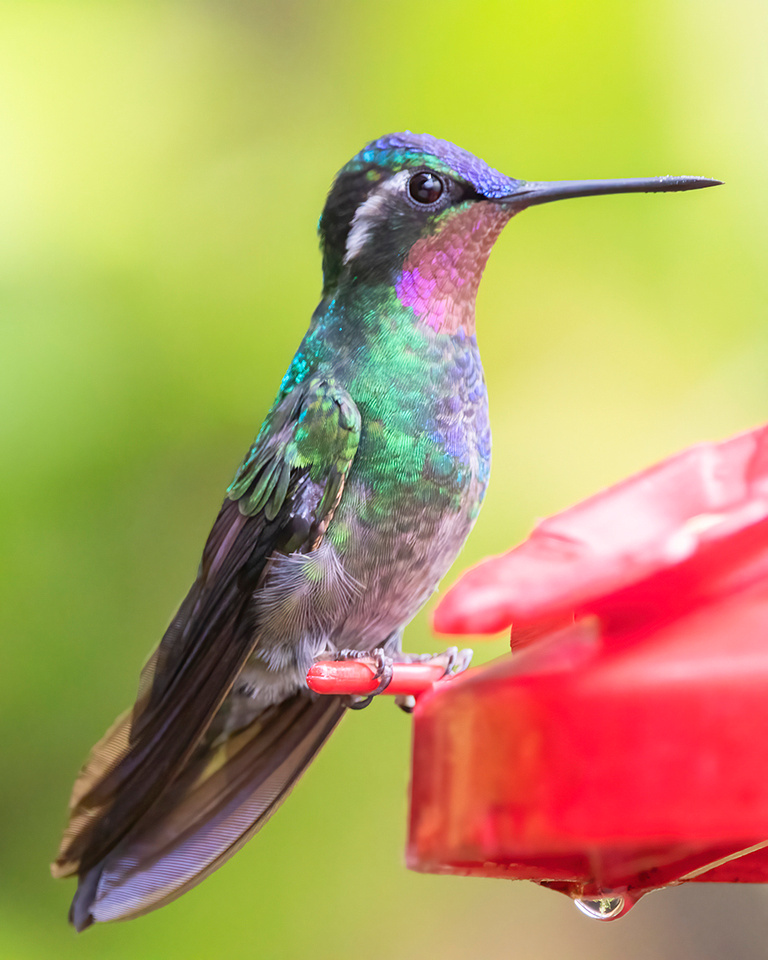

Purple-Throated Mountain Gem


Green-Crowned Brilliant
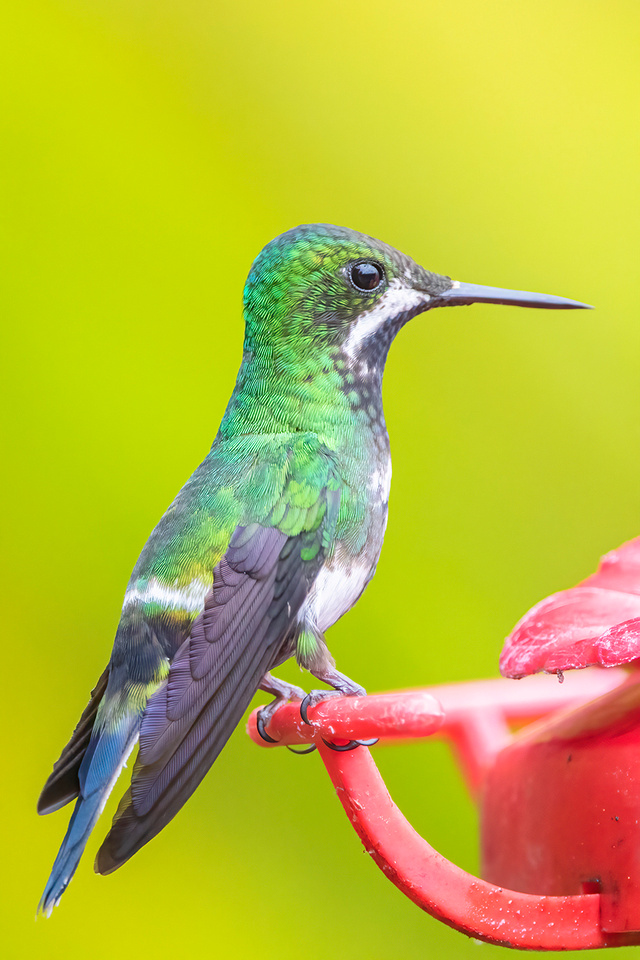

Green Thorntail
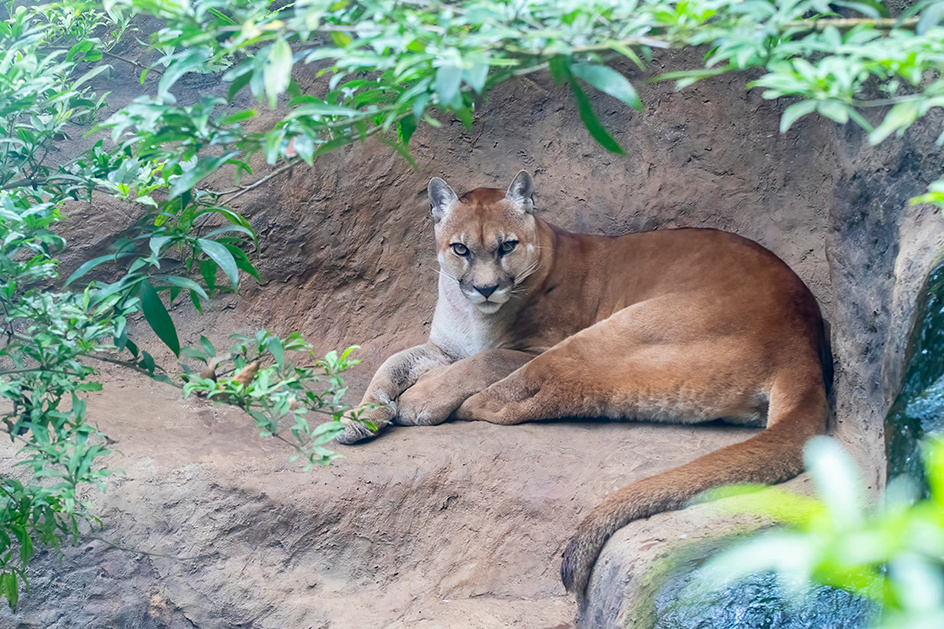
 Mountain Lion - Love the eye contact.
Mountain Lion - Love the eye contact.
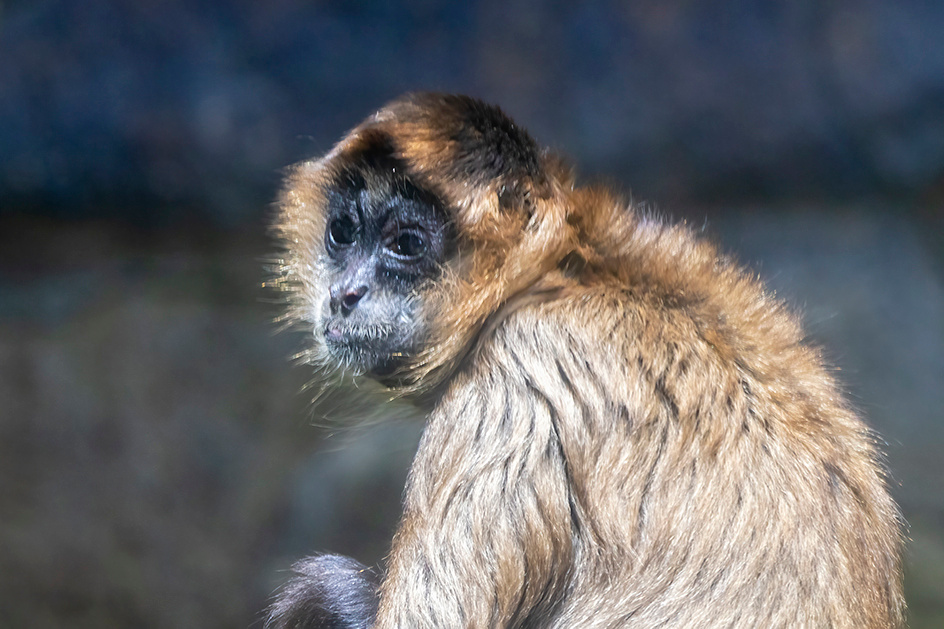
 Spider Monkey
Spider Monkey
Our next venue on the itinerary was Laguna de Lagarto Lodge near Boca Tapada. This lodge is in the Caribbean lowlands near the Nicaraguan border. The last 22kms were on a potholed gravel road which did not allow for rapid travel. I did manage an image of a russet-naped wood rail and a social flycatcher as we were driving in.


Russet-Naped Woodrail - Cruising along the roadside ditch

 Social Flycatcher - A very tame bird. I was probably less than 3 feet away when I took this image.
Social Flycatcher - A very tame bird. I was probably less than 3 feet away when I took this image.
It was warm and humid at this location with at least one rain shower each day. It is a pretty basic lodge, lacking air conditioning and some other luxury amenities. There were very attractive setups placed at various distances from the covered shooting area. I was able to capture excellent images of many avian species at the feeders and spent most of each day at the feeders. One of the birding highlights at this location was a pair of great green macaws which did a flyby as I was unloading the car. Unfortunately they never came in to the feeders.
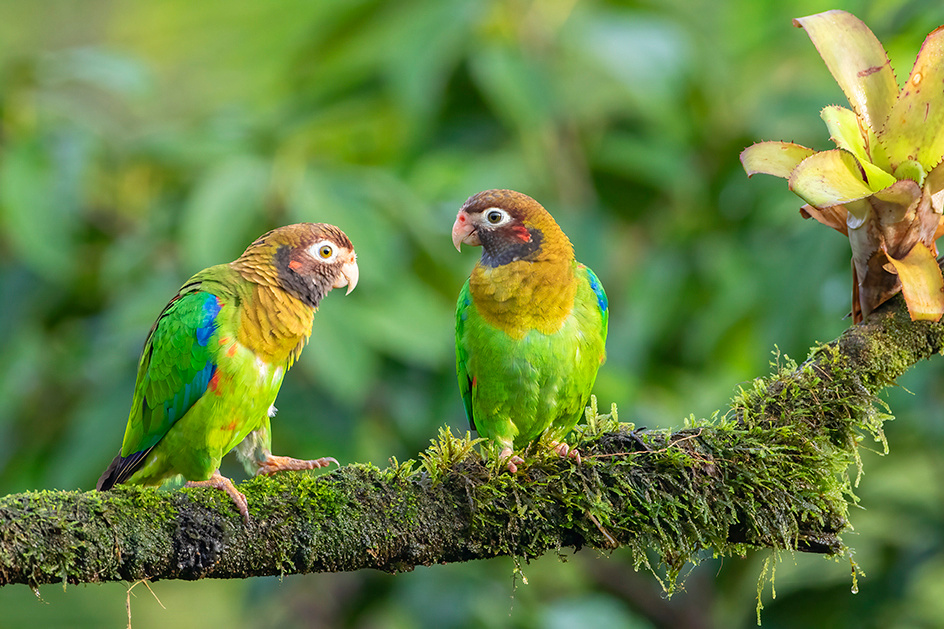
 Brown-Hooded Parrot
Brown-Hooded Parrot
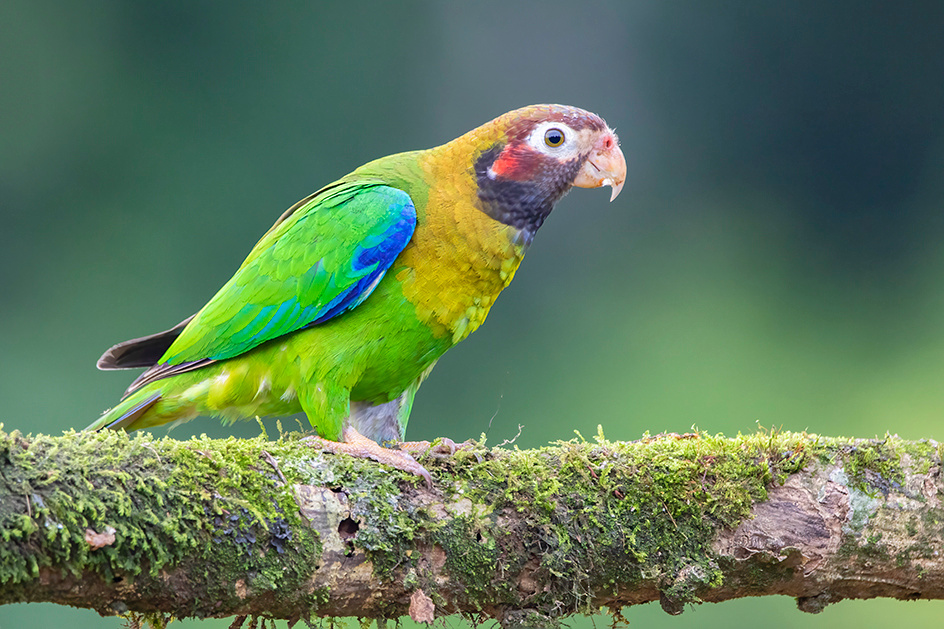
 Brown-Hooded Parrot - These parrots flocked to the feeders in noisy groups of two to eight birds at a time.
Brown-Hooded Parrot - These parrots flocked to the feeders in noisy groups of two to eight birds at a time.
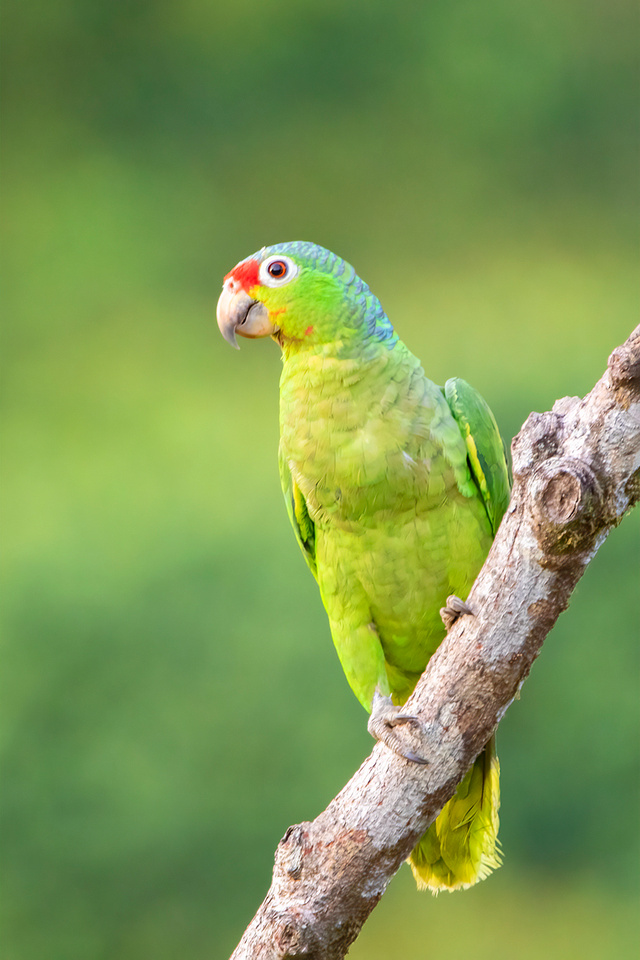

Red-Lored Parrot A pair of these large parrots came in several times a day checking out potential nest cavities.
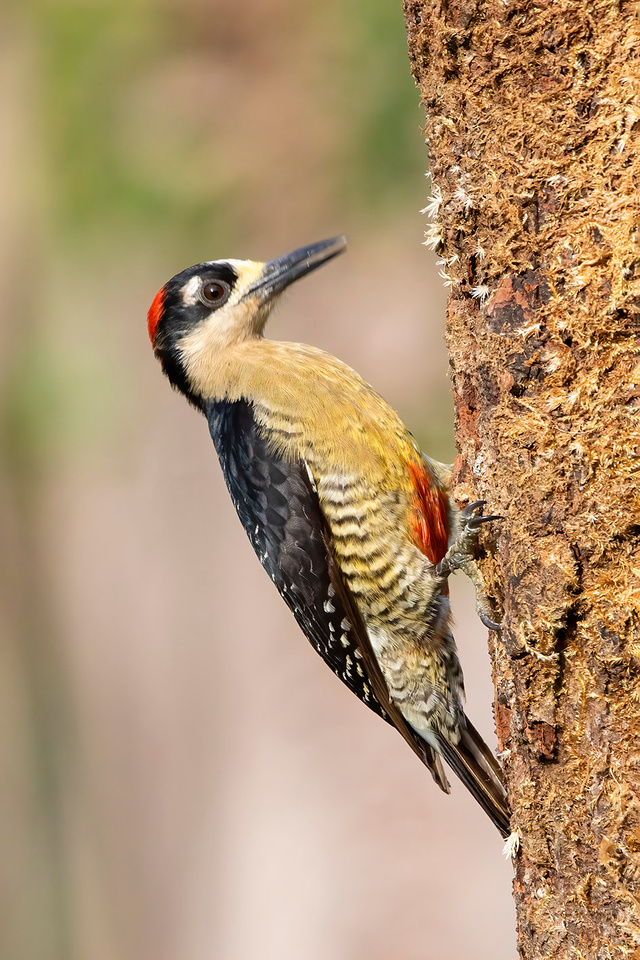

Black-Cheeked Woodpecker
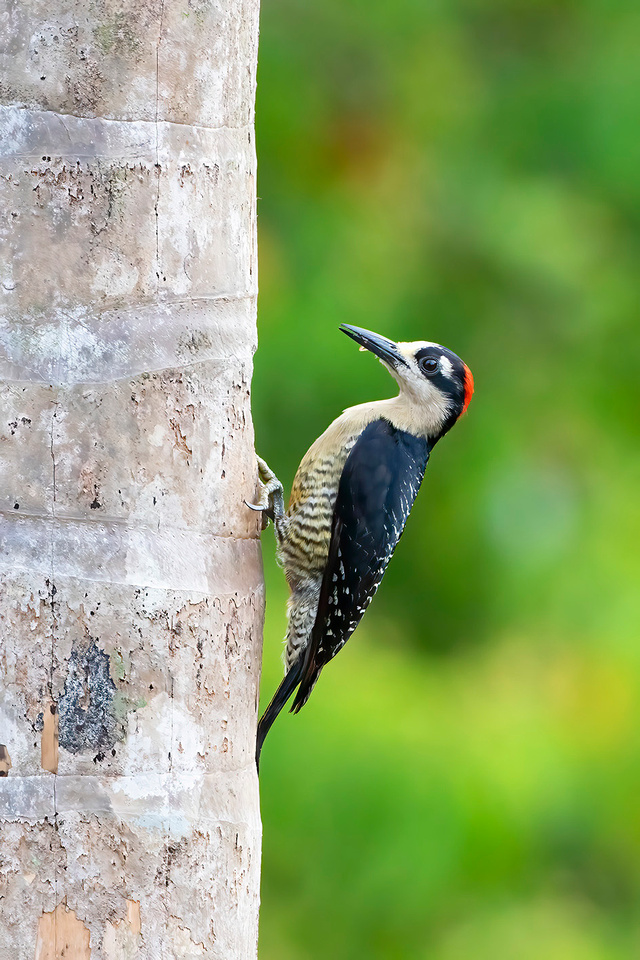

Black-Cheeked Woodpecker - A pair of these woodpeckers were nesting in a cavity next to the photography platform.
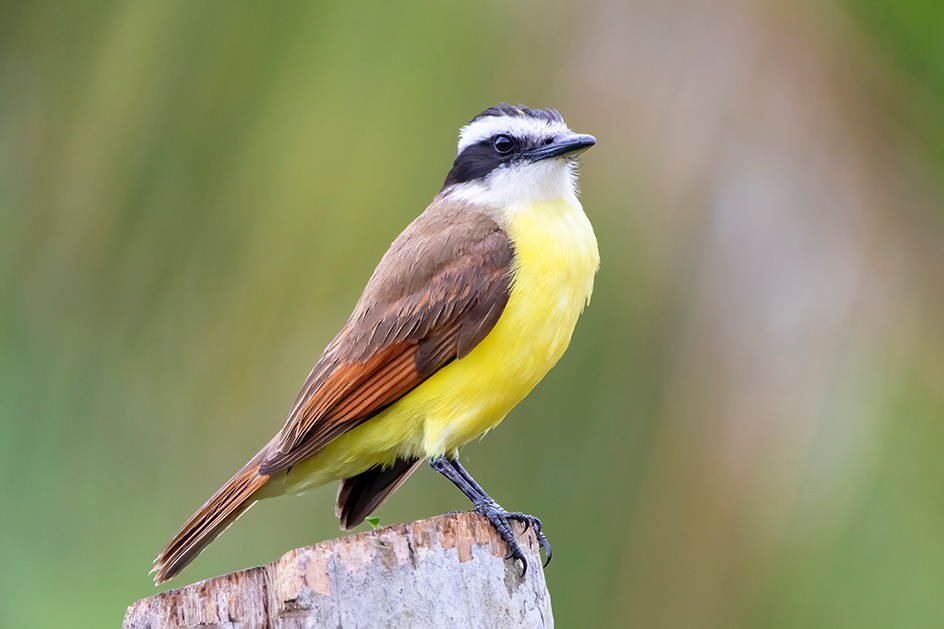
 White-Ringed Flycatcher
White-Ringed Flycatcher
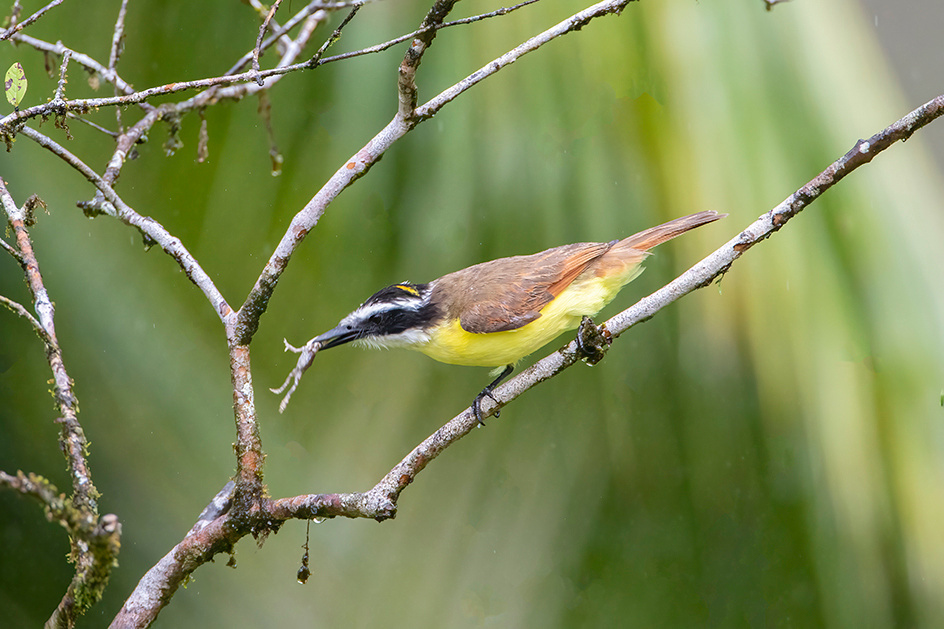

White-Ringed Flycatcher - Apparently their diet is not restricted to flies. This one caught and ate a small tree frog.
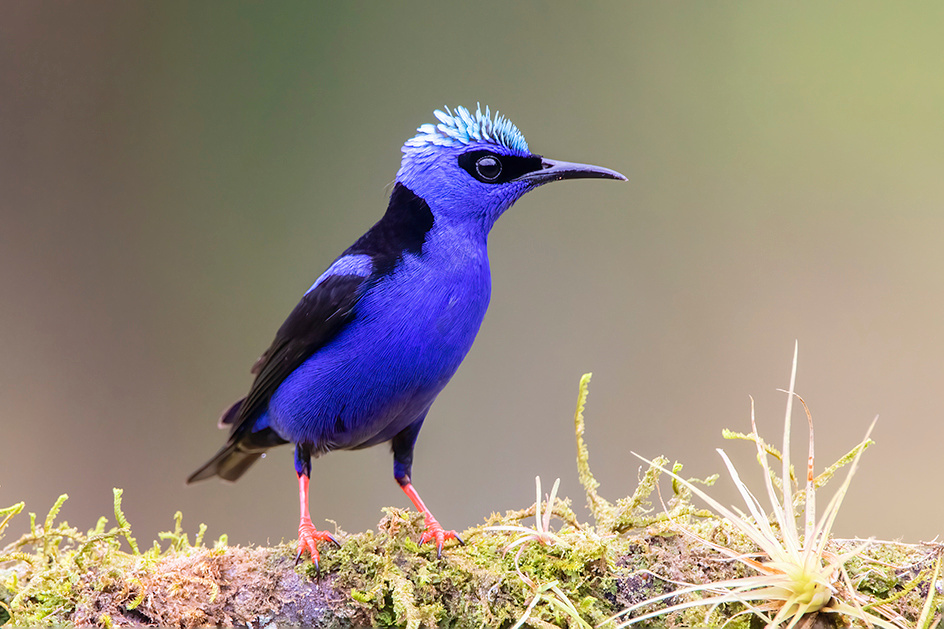
 Red-Legged Honeycreeper - I had previously observed this spectacular species in Panama, but had failed to get any satisfactory photos. I had many opportunities to capture this species on the trip. This is the male.
Red-Legged Honeycreeper - I had previously observed this spectacular species in Panama, but had failed to get any satisfactory photos. I had many opportunities to capture this species on the trip. This is the male.


Red-Legged Honeycreeper - Generally it is considered poor form to photograph a bird if the bait is visible. However, this was my only image where the golden wing feathers were visible.

 Red-Legged Honeycreeper (Female)
Red-Legged Honeycreeper (Female)
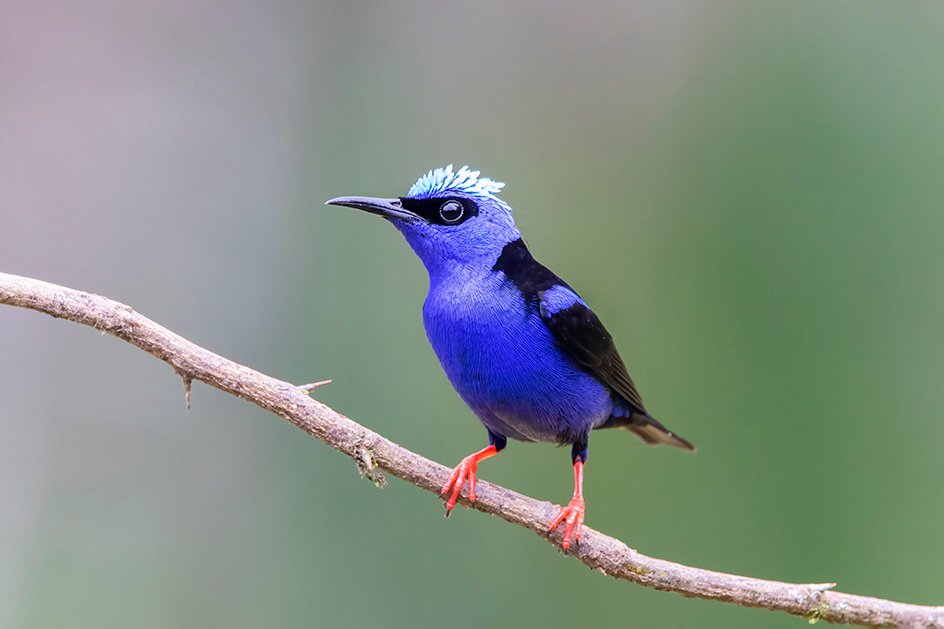
 Red-Legged Honeycreeper - One of three honeycreeper species we were able to photograph at this location. Note the raised turquoise crest.
Red-Legged Honeycreeper - One of three honeycreeper species we were able to photograph at this location. Note the raised turquoise crest.

 Shining Honeycreeper - Note the yellow legs.
Shining Honeycreeper - Note the yellow legs.
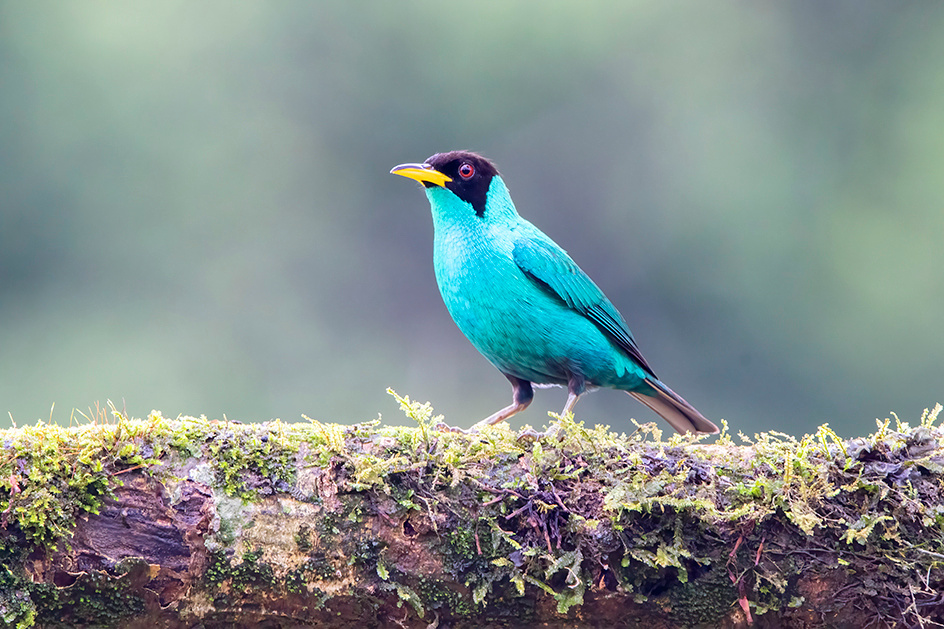
 Green Honeycreeper (Male)
Green Honeycreeper (Male)
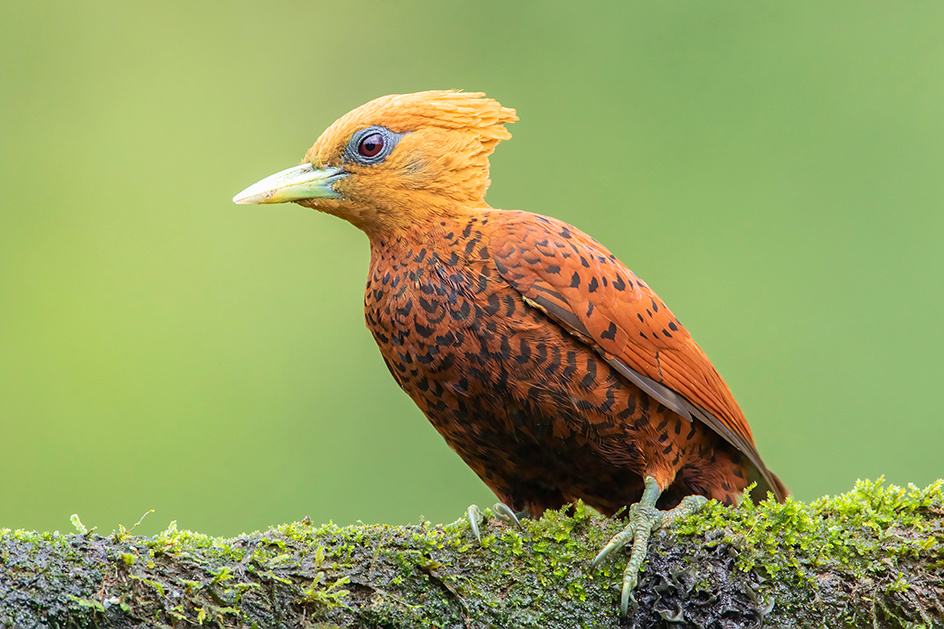
 Chestnut-Colored Woodpecker (Female)
Chestnut-Colored Woodpecker (Female)


Chestnut-Colored Woodpecker - Beautiful active birds which frequently came into the fruit feeders,


Chestnut-Colored Woodpecker (Male)
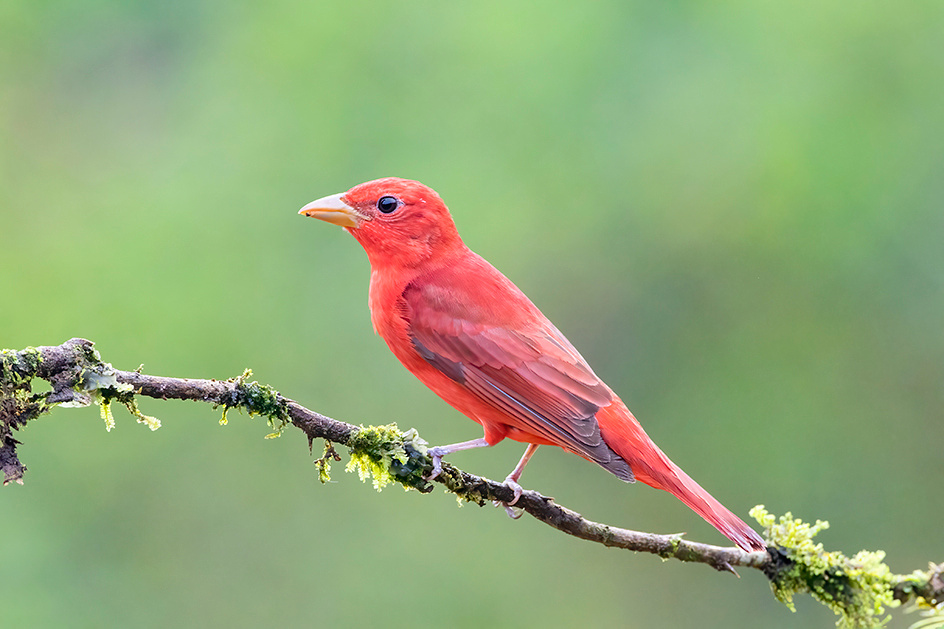
 Summer Tanager (Male)
Summer Tanager (Male)
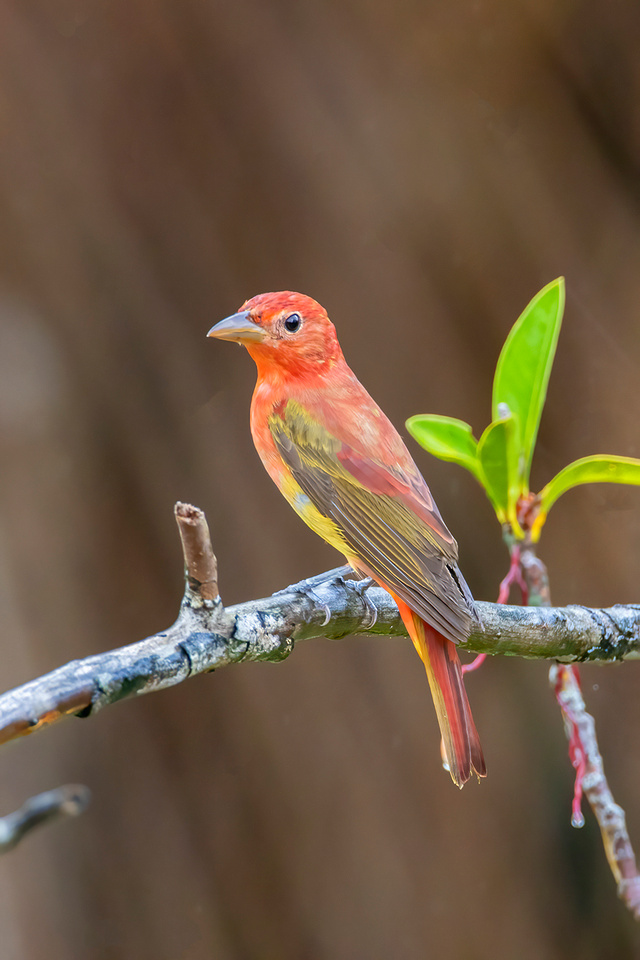

Summer Tanager (Immature Male) I originally misidentified this tanager as a flame- colored tanager.


Plain-Brown Woodcreeper - Appropriately named.
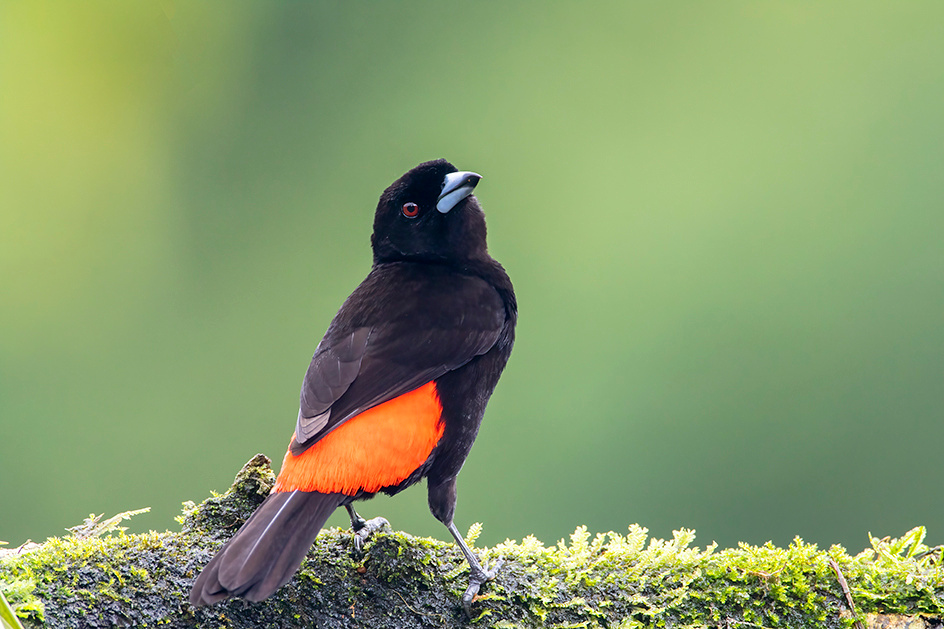
 Scarlet-Rumped Tanager - One of the many beautiful tanager species we encountered.
Scarlet-Rumped Tanager - One of the many beautiful tanager species we encountered.


Scarlet-Rumped Tanager (Male)
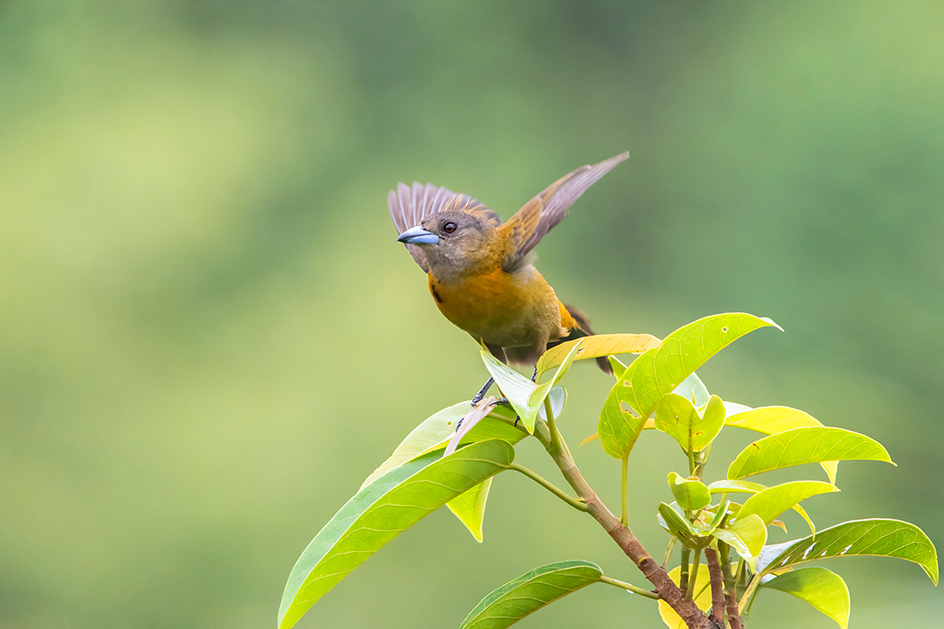
 Scarlet-Rumped Tanager (Female) - Not quite as striking as the male.
Scarlet-Rumped Tanager (Female) - Not quite as striking as the male.


Olive-Backed Euphonia - Subtle coloration.
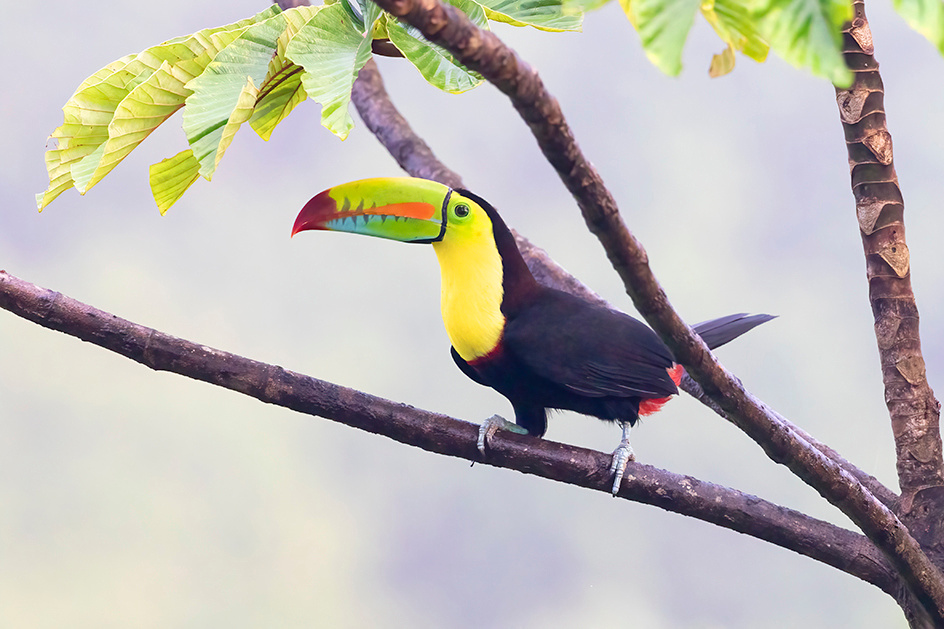
 Keel-Billed Toucan
Keel-Billed Toucan
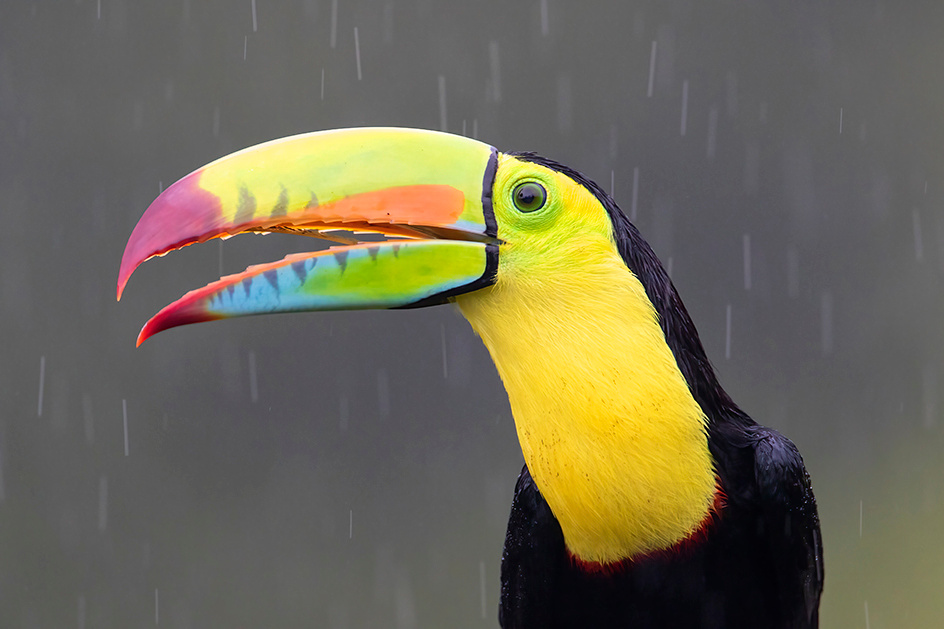
 Keel-Billed Toucan in the rain
Keel-Billed Toucan in the rain
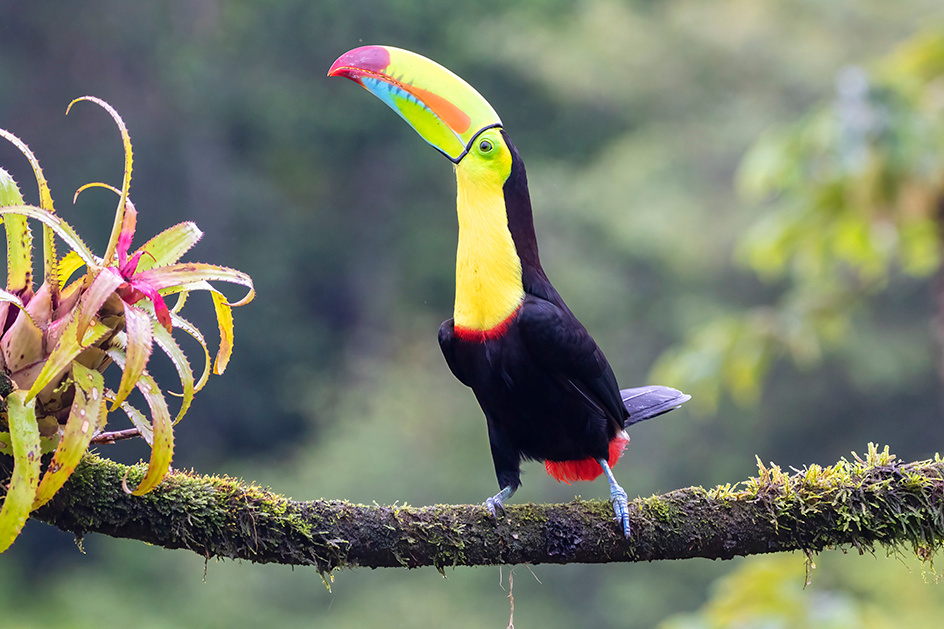
 Keel-Billed Toucan
Keel-Billed Toucan

 Collared Aracari - Frequently encountered in groups of five or six.
Collared Aracari - Frequently encountered in groups of five or six.
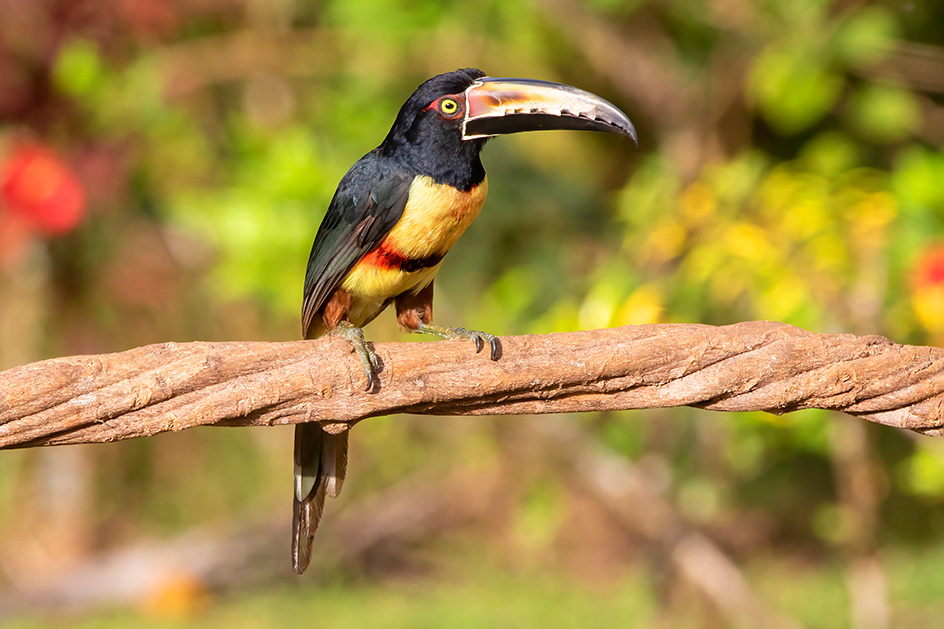
 Collared Aracari
Collared Aracari

 Montezuma Oropendola - Crow sized bird eating fruit, nectar, invertebrates and vertebrates.
Montezuma Oropendola - Crow sized bird eating fruit, nectar, invertebrates and vertebrates.
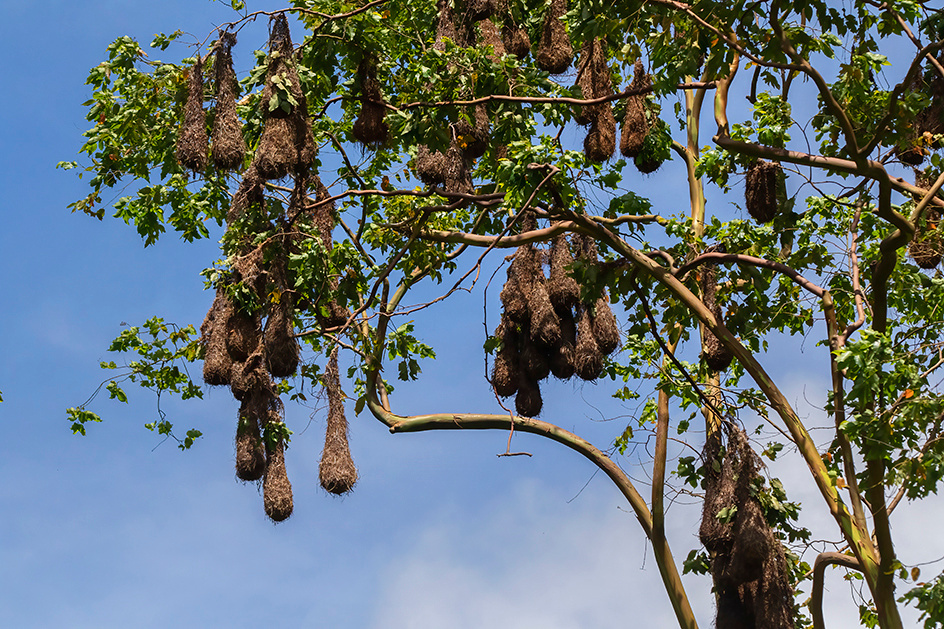
 Montezuma Oropendola Nest Colony - Dense colony of hanging nests
Montezuma Oropendola Nest Colony - Dense colony of hanging nests
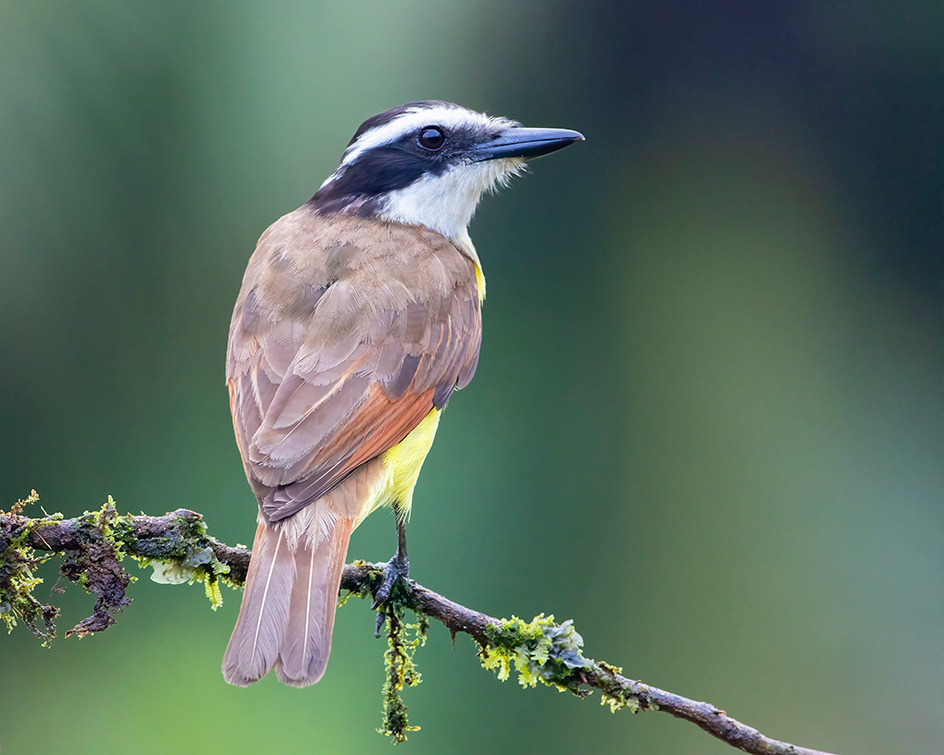
 Great Kiskadee - A large, colorful, noisy flycatcher
Great Kiskadee - A large, colorful, noisy flycatcher
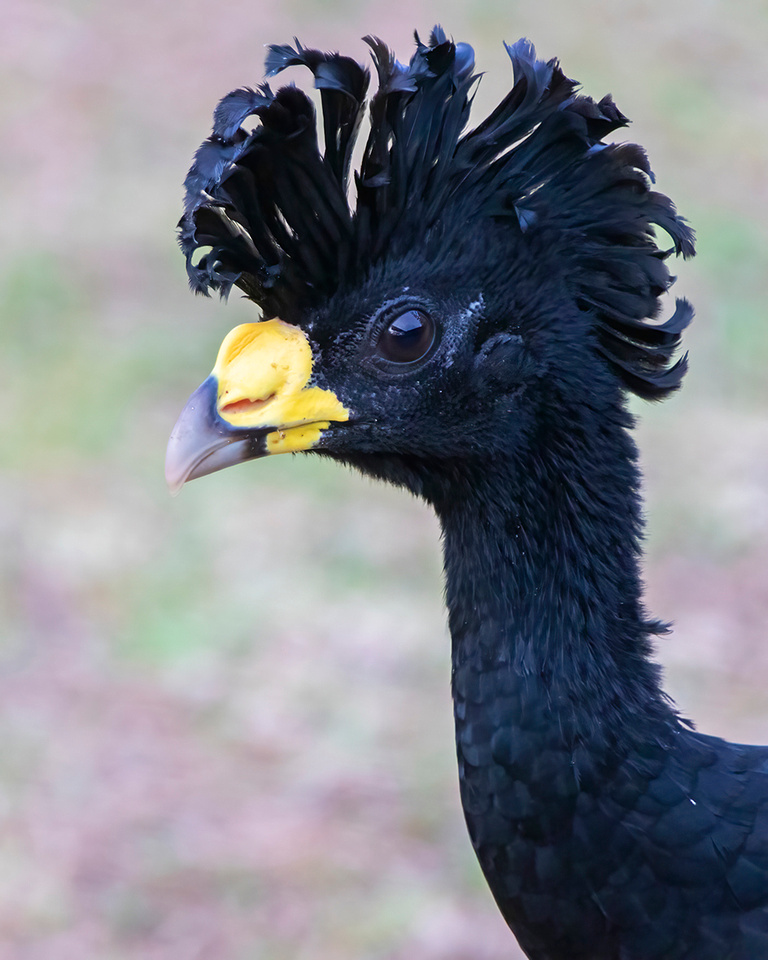

Great Curassow (Male) - While capable of flight, these large birds were generally observed on the forest floor.

 Great Curassow (Male) - Similar in size to a small turkey.
Great Curassow (Male) - Similar in size to a small turkey.
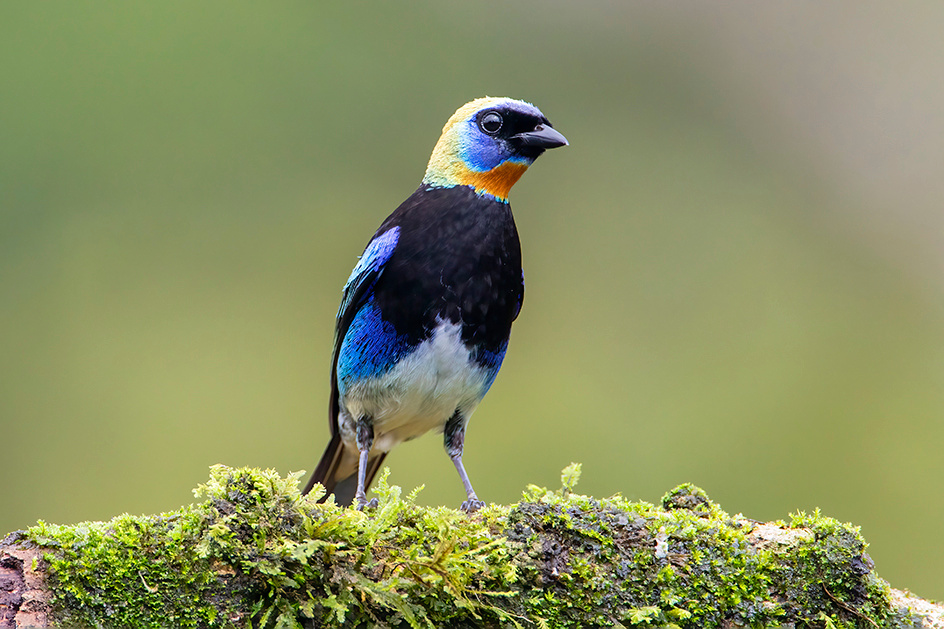
 Golden-Hooded Tanager - Small but colorful tanager species we observed in several locations and habitats.
Golden-Hooded Tanager - Small but colorful tanager species we observed in several locations and habitats.
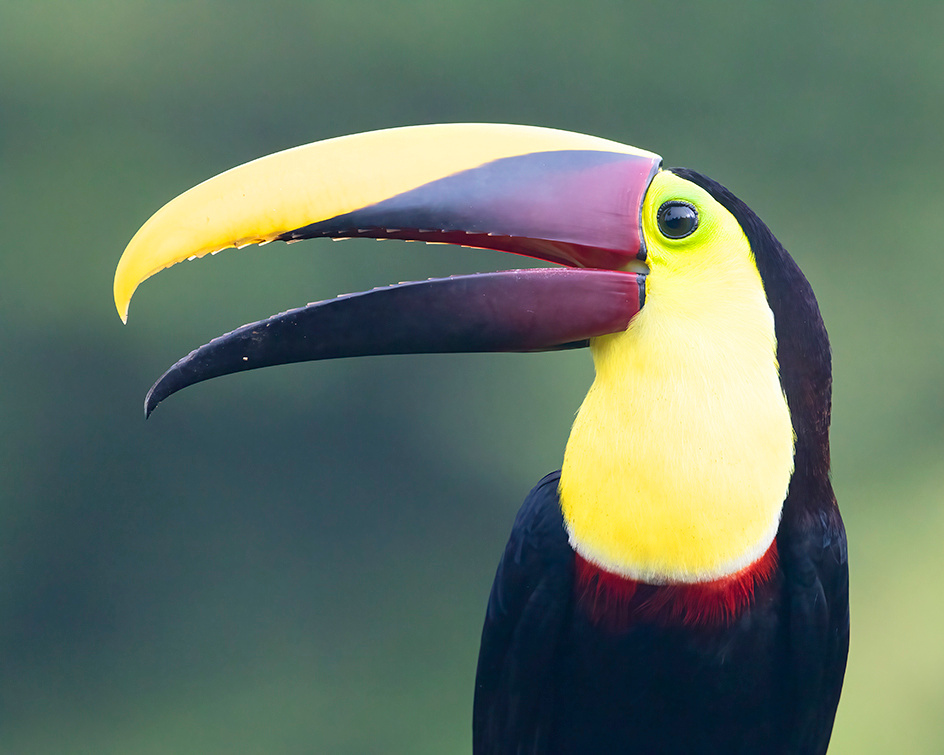
 Chestnut-Mandibled Toucan - These large cavity nesters dominated the fruit feeders.
Chestnut-Mandibled Toucan - These large cavity nesters dominated the fruit feeders.

 Chestnut-Mandibled Toucan - Note the bright blue legs.
Chestnut-Mandibled Toucan - Note the bright blue legs.
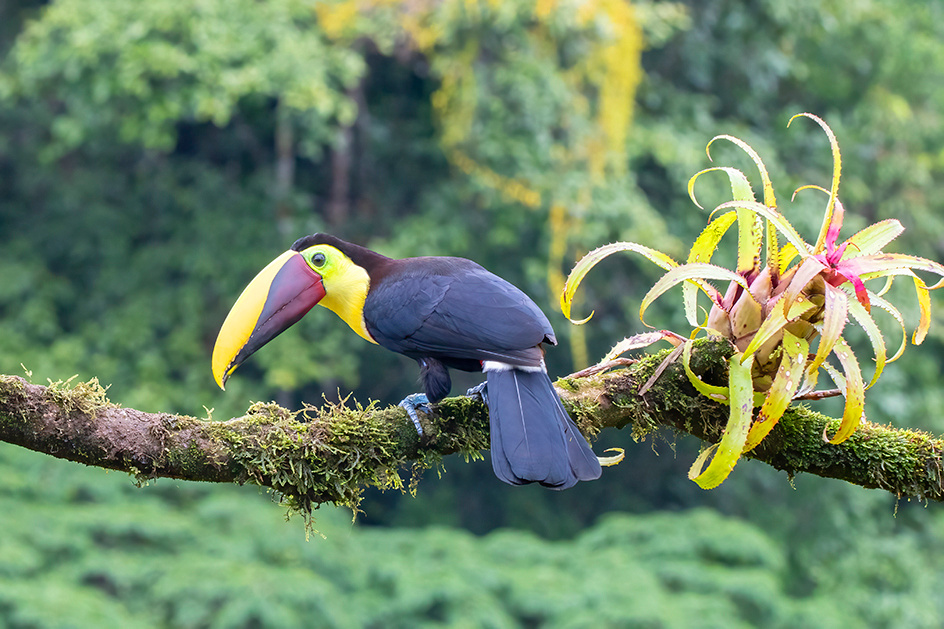
 Chestnut-Mandibled Toucan - Feeds on fruits, lizards, snakes and nestling birds.
Chestnut-Mandibled Toucan - Feeds on fruits, lizards, snakes and nestling birds.
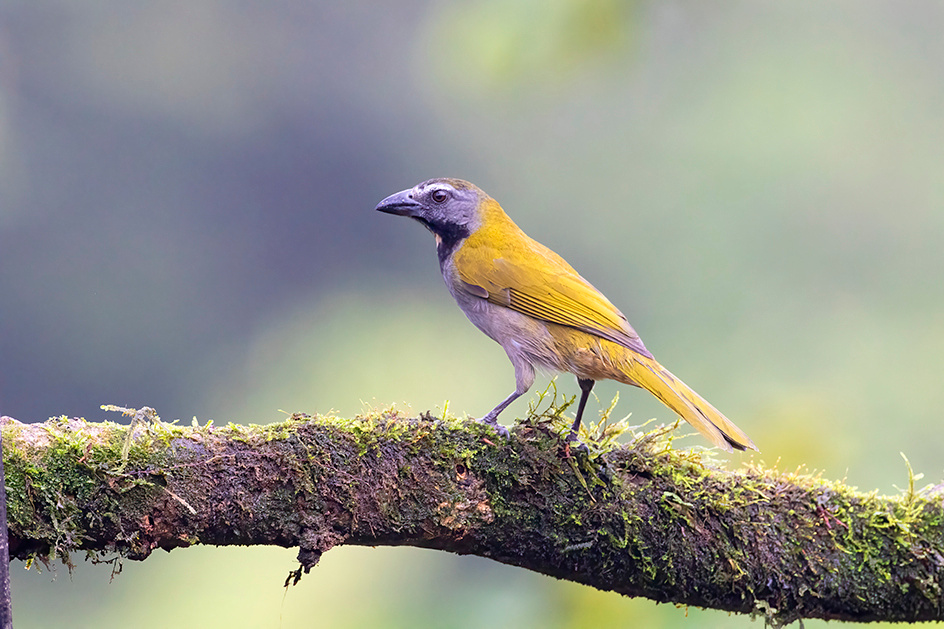
 Buff-Throated Saltator - Literature suggests that this species has a wide range within Costa Rica. However, this was the only locations where we observed them.
Buff-Throated Saltator - Literature suggests that this species has a wide range within Costa Rica. However, this was the only locations where we observed them.

 Buff-Throated Saltator
Buff-Throated Saltator

 Black-Cowled Oriole - I had previously seen this oriole only in Western Mexico
Black-Cowled Oriole - I had previously seen this oriole only in Western Mexico
The lodge is know as one of the best locations in the world to view and photograph king vulture. We spent several hours in the ground level vulture hide. The vultures are baited using byproducts from the local slaughterhouse. The bait is placed in pits and is not visible, but the vultures can be observed at very close distance which allow full frame head shots. We had 3 adults and 2 juveniles come in while we were at the blind. I took hundreds of images. Unfortunately, we were sharing the blind with a Japanese foursome. One of their members had great difficulty keeping quiet. Constant movement and chattering was not condusive to closeup photo opportunities. Black vultures were abundant, but gave their larger cousins some personal space.


King Vulture - Note the full crop.


King Vulture - Lots of eye contact
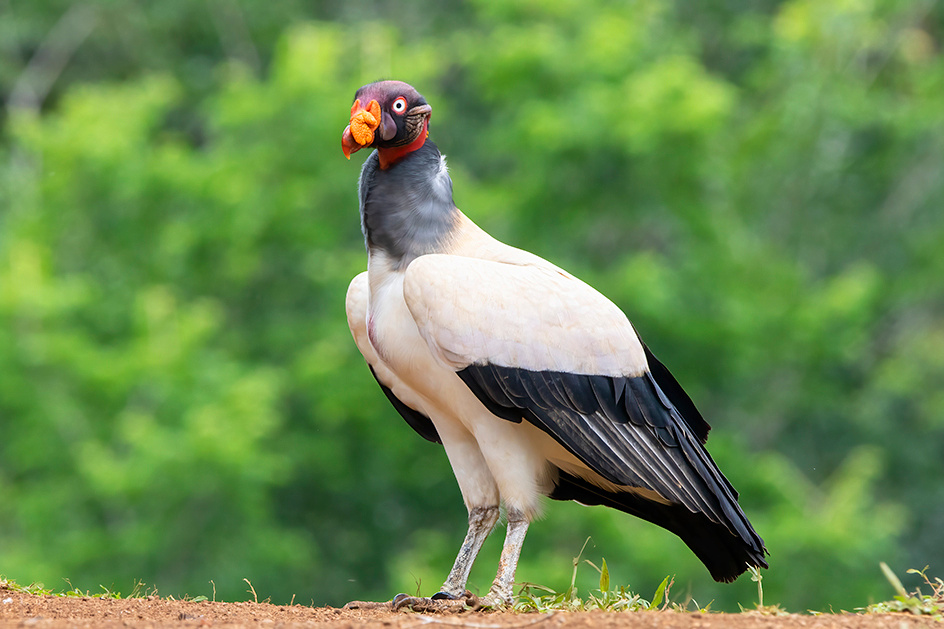
 King Vulture - A regal pose
King Vulture - A regal pose

 King Vulture (Immature) - A face only a mother could love.
King Vulture (Immature) - A face only a mother could love.

 King Vulture - Bullies at the carcasses.
King Vulture - Bullies at the carcasses.

 Black Vulture - A more common vulture species
Black Vulture - A more common vulture species

 Black Vulture - Posing for me on this vegetated stump
Black Vulture - Posing for me on this vegetated stump
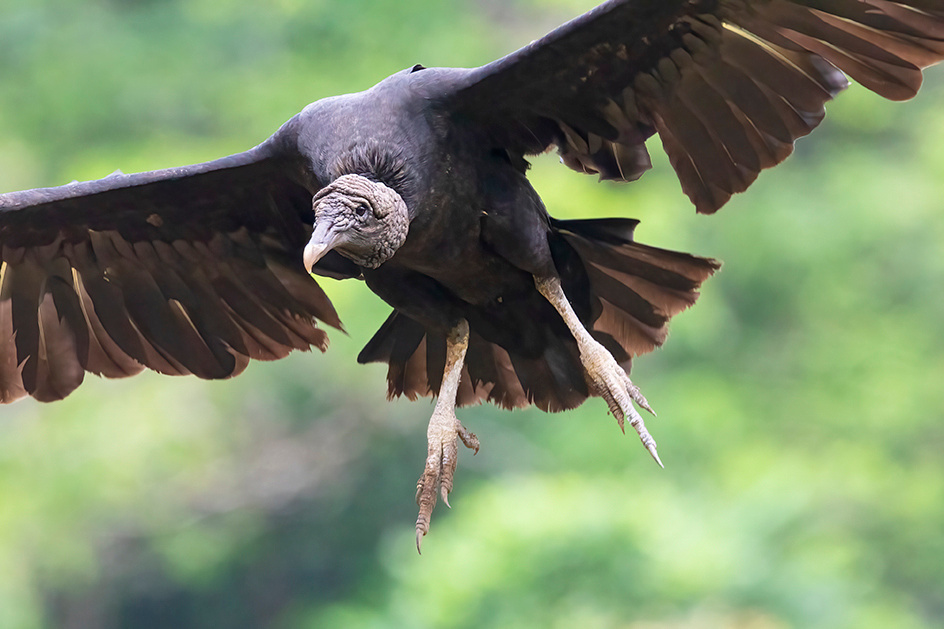
 Black Vulture - Incoming
Black Vulture - Incoming
Another option included in our tour was night-time bat photography. I had never attempted this sort of photography and the guide was skeptical that my equipment was suitable. It took quite some time to set up. I used my 24 to 105mm landscape lens at 55mms and a single flash from a distance of about 2 feet from the banana flower we used as bait. The flower was sprayed with sugar water and almost immediately we had bats. These were orange-bellied nectar bats. They were very quick and my keeper rate was very poor. Lots of empty frames. I did manage to get about 6 useable frames. A new and interesting photo experience. Becky was a trooper as she was sitting behind me in total darkness as the many bats flew by, occasionally brushing her hair with their wings.
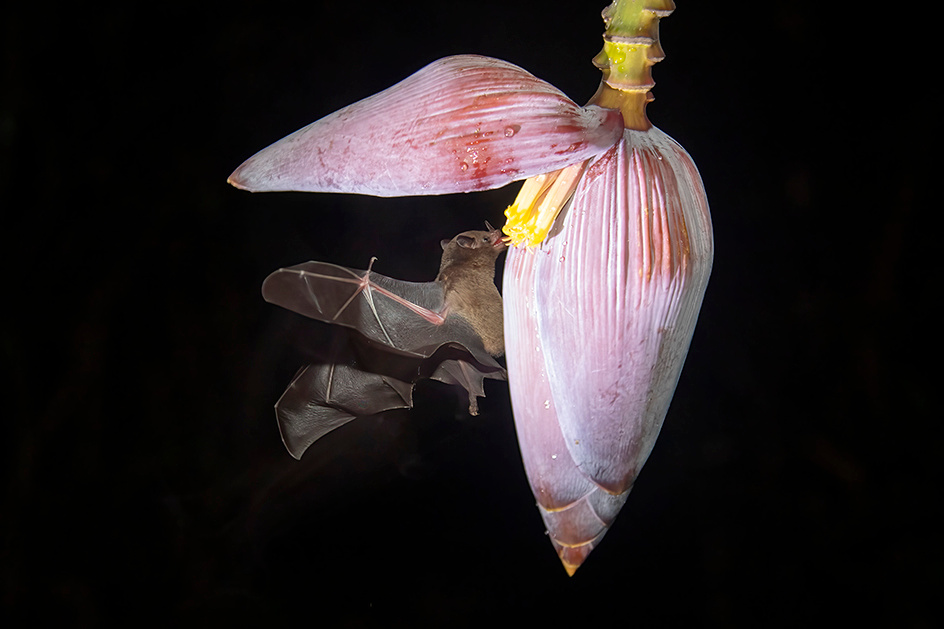
 Orange-Bellied Nectar Bat - Very quick nocturnal pollinator.
Orange-Bellied Nectar Bat - Very quick nocturnal pollinator.
The lodge also offers guided bird walks and a nighttime camian walk where a couple of largish caimans emerge from the lagoon and respond to commands in German.
Our next location was Hotel Lomas del Volcan at the base of Arenal Volcano. This lodge was a significant upgrade from the Arenal Observatory Lodge where this Aratinga tour normally stay. Excellent food, comfortable individual bungalows and beautifully landscaped grounds. We woke to the sounds of howler monkeys every morning and spent a few hours each day photographing wildlife on the grounds.


Mantled Howler Monkey - Dominant male surveys his family group
We visited Danaus Ecocenter, a small patch of intact forest. The primary attraction here was a small pond containing a boat-billed heron colony, These herons are nocturnal and difficult to photograph in the open elsewhere. While I was shooting the herons, Becky pointed out a tiny bird perched almost directly over us. It was an American pygmy kingfisher. A "life bird" for me. Other species included basilisk lizard, spectacled camian, and a white-collared manakin. The basilisk lizards are also called "Jesus Christ lizard" as they appear to be able to run on water.
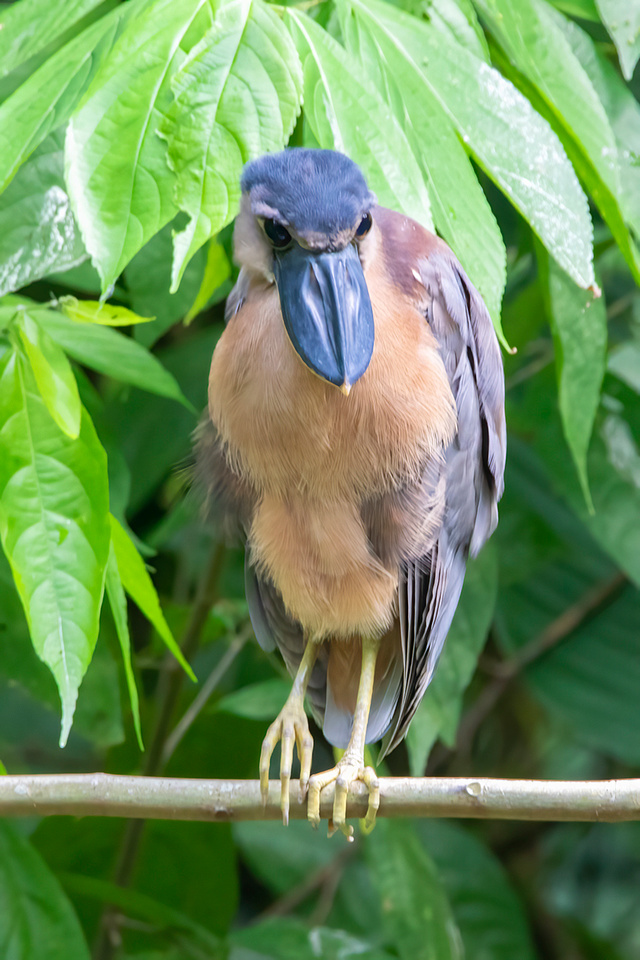

Boat-Billed Heron - Gotta love that bill.

 Boat-Billed Heron calling
Boat-Billed Heron calling
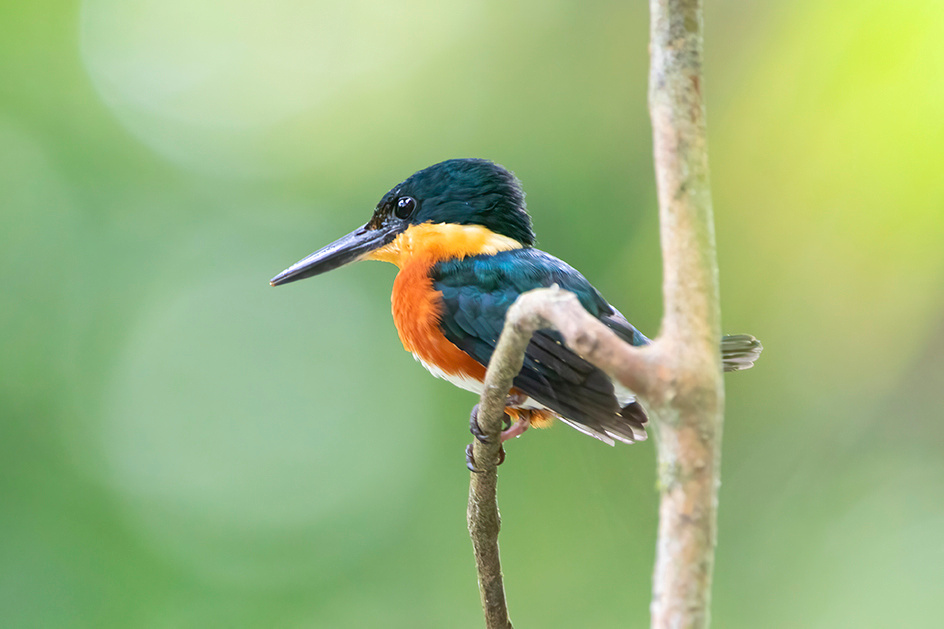
 American Pygmy Kingfisher - Becky spotted this tiny kingfisher perched directly over us. About 5 inches in length.
American Pygmy Kingfisher - Becky spotted this tiny kingfisher perched directly over us. About 5 inches in length.
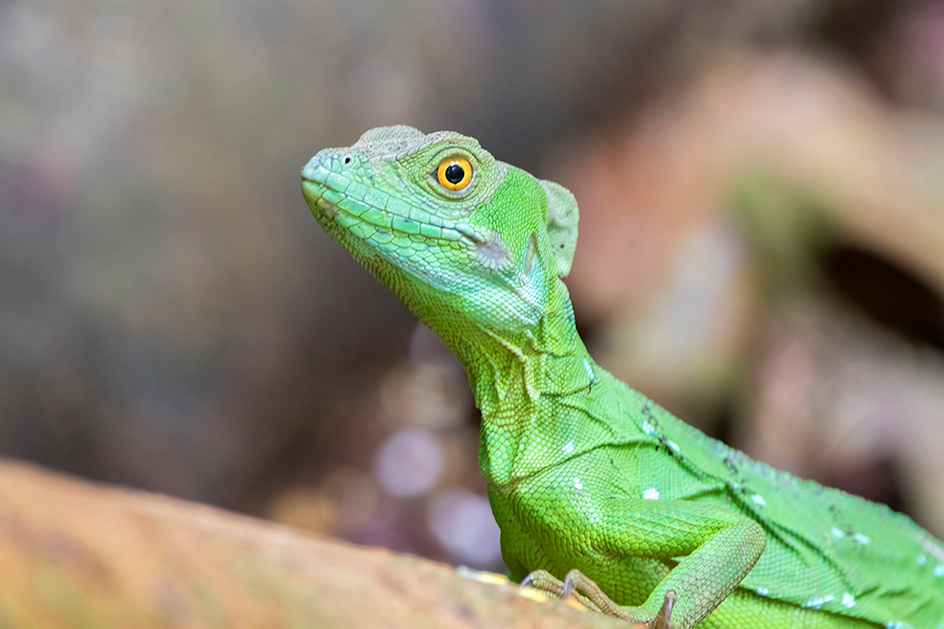
 Green Baselisk (also called plumed baselisk)
Green Baselisk (also called plumed baselisk)
The next day we were to meet our guide at Arenal Observatory Lodge for some trail hiking. White-nosed coatis were everywhere on the grounds of the lodge.
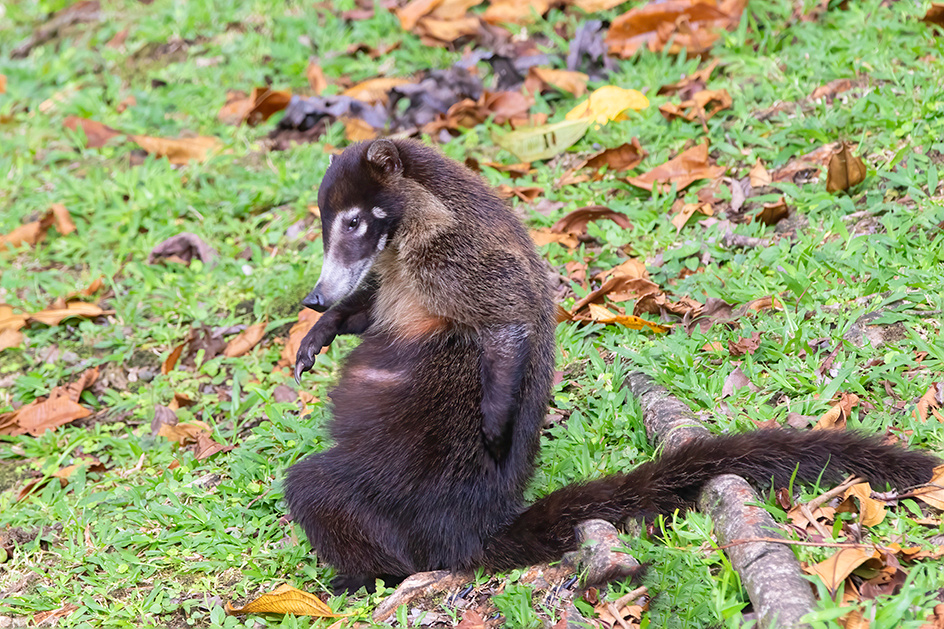
 White-Nosed Coati - That itch!
White-Nosed Coati - That itch!

 White-Nosed Coati - Very arboreal
White-Nosed Coati - Very arboreal
We were extremely fortunate to find and photograph a lattice-tailed trogon. This species is quite rare at this location. Photo opportunities in the densely vegetated trails were difficult. I did better in the more open gardens of the lodge where I took many shots of a gartered trogon. I photographed a number of life birds at the feeders at the lodge including bananaquit, Tennessee warbler, and red-footed plumeleteer.
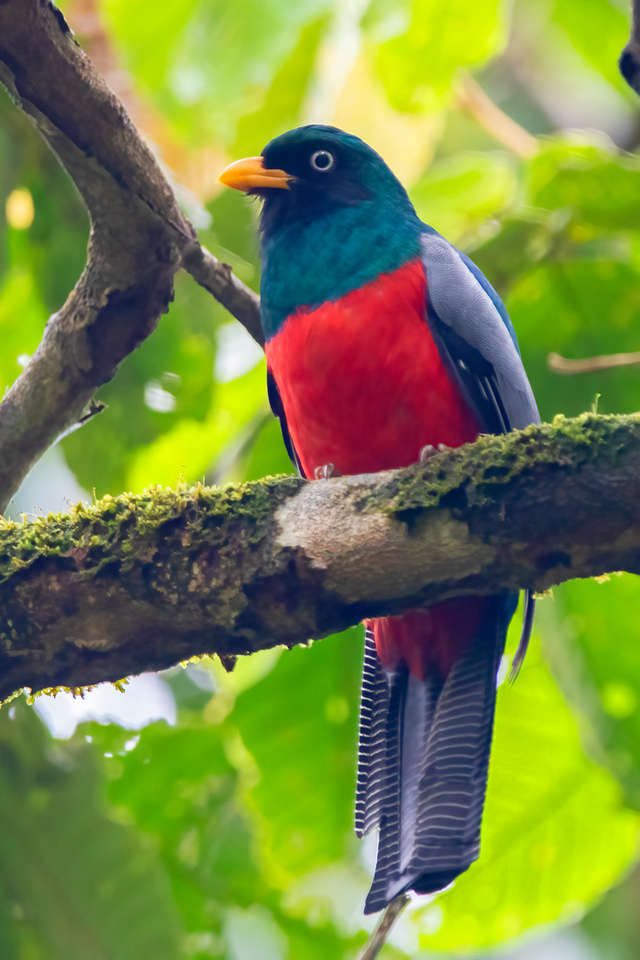

Lattice-Tailed Trogon
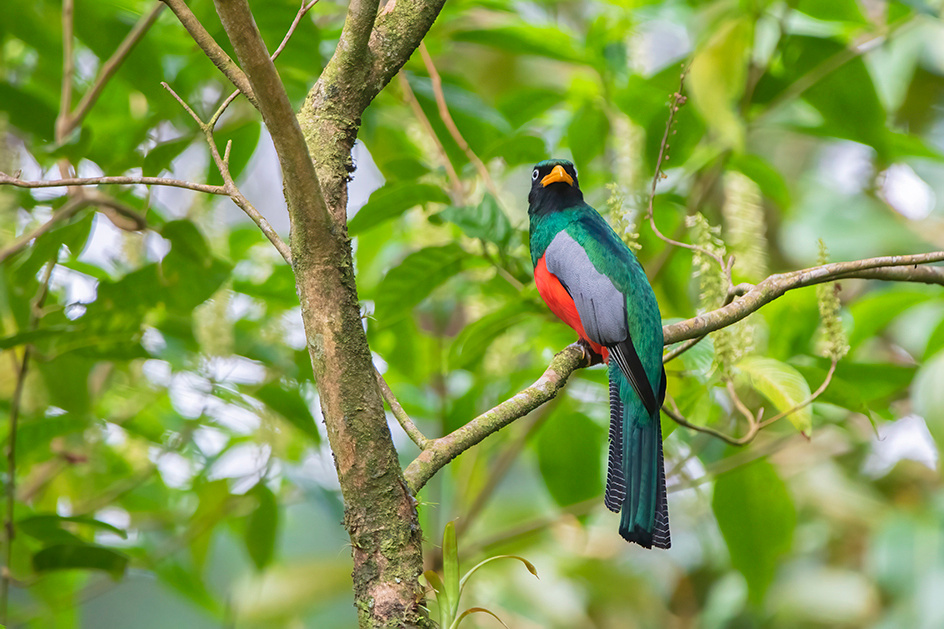
 Lattice-Tailed Trogon - This species has a limited range, from Costa Rica to western Panama
Lattice-Tailed Trogon - This species has a limited range, from Costa Rica to western Panama
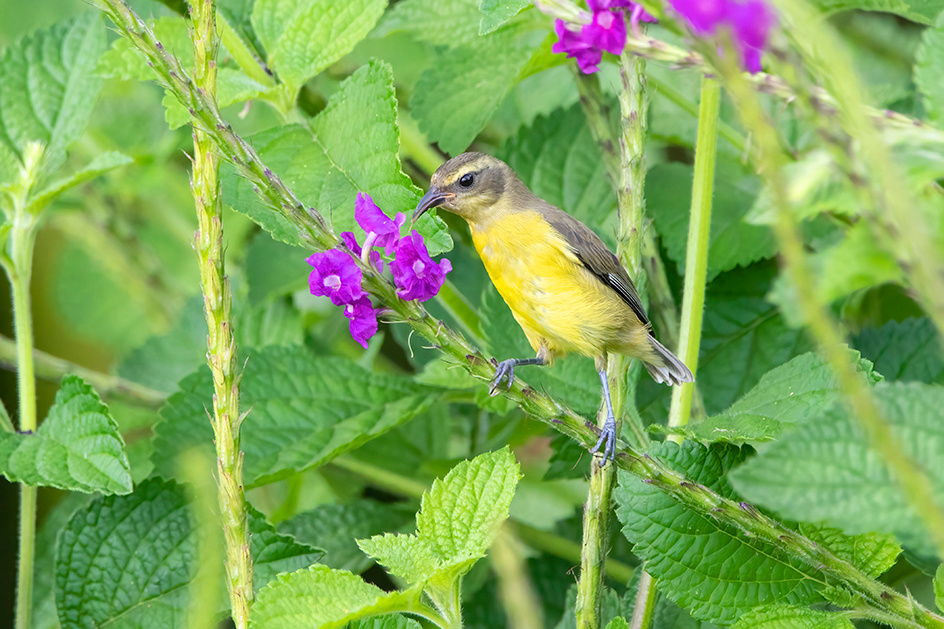
 Bananaquit - A small, active warbler feeding primarily on fruit and nectar.
Bananaquit - A small, active warbler feeding primarily on fruit and nectar.

 Arenal Volcano - A rare day when the cone is not covered with clouds. Note the steam emerging from this active volcano.
Arenal Volcano - A rare day when the cone is not covered with clouds. Note the steam emerging from this active volcano.


Crested Guan - Large and very loud.
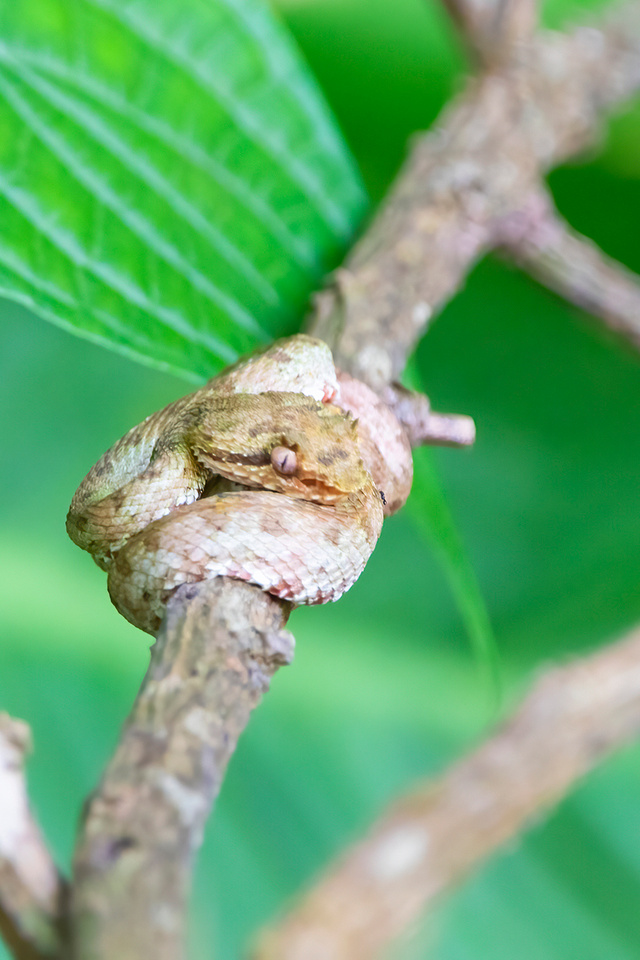

Eyelash Pit Viper - This specimen was very small. They can be difficult spot even at close range. This species is arboreal and comes in a wide variety of colors including brilliant yellow/gold.
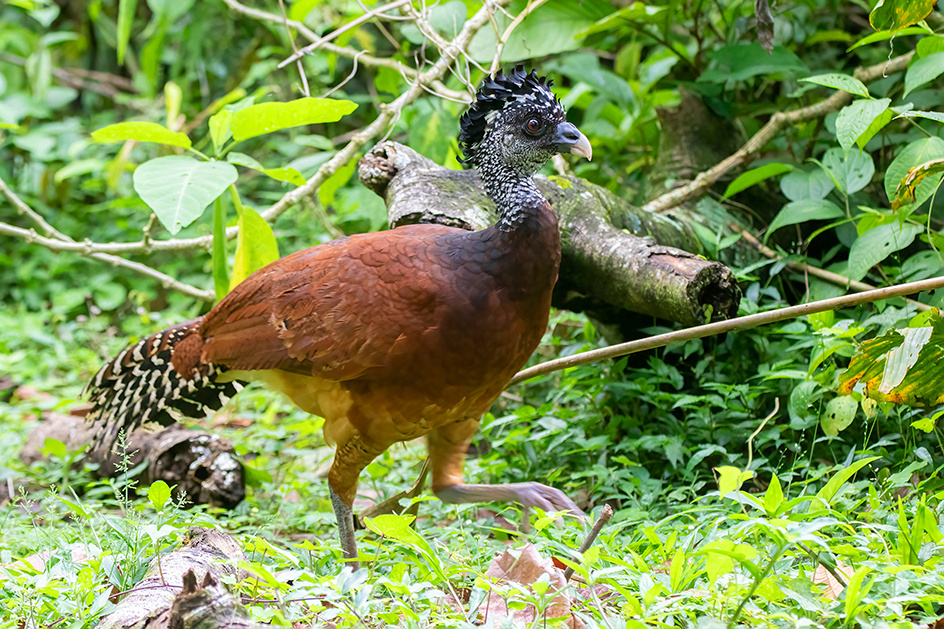
 Great Curassow (Female) The colors and patterns on there female make them much more attractive than the uniform black plumage of the male.
Great Curassow (Female) The colors and patterns on there female make them much more attractive than the uniform black plumage of the male.

 Yellow Warbler - A common nesting species in northern California that I rarely seem to get this clean a shot at. Note the red streaking on the breast of this male in full breeding plumage.
Yellow Warbler - A common nesting species in northern California that I rarely seem to get this clean a shot at. Note the red streaking on the breast of this male in full breeding plumage.
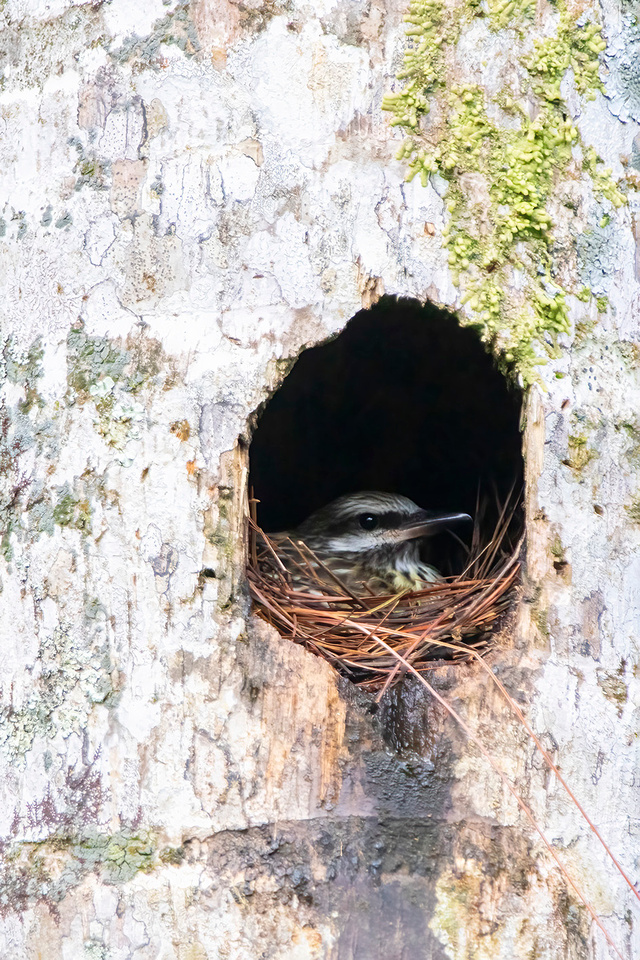

Nesting Sulphur-Bellied Flycatcher

 Blue-Black Grosbeak (Female)
Blue-Black Grosbeak (Female)
We left the Arenal area and headed toward the Pacific coast. On the way we stopped for a last minute addition to our tour. Pieter had suggested that we stop in San Luis and spend the day with a non-english speaking guide named Rodreigo. Pieter indicated Rodreigo was an excellent guide he could really find the birds, including a difficult to find and photograph bird, the three-wattled bellbird. Our initial photo stop yielded a number of excellent birds in a pretty decent location for photography including speckled tanager, emerald tanager, blue-gray tanager, green honeycreeper, bay-head tanager, wood thrush, sulphur-bellied flycatcher, common chlorospringus, crowned woodnymph, and green-crowned brilliant.

 Speckled Tanager
Speckled Tanager
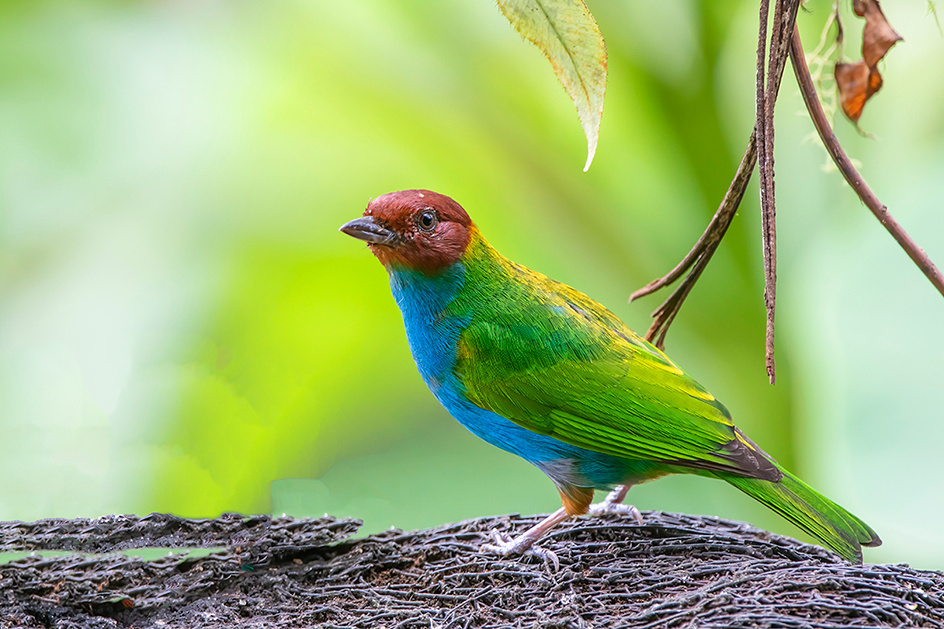

Bay-Headed Tanager
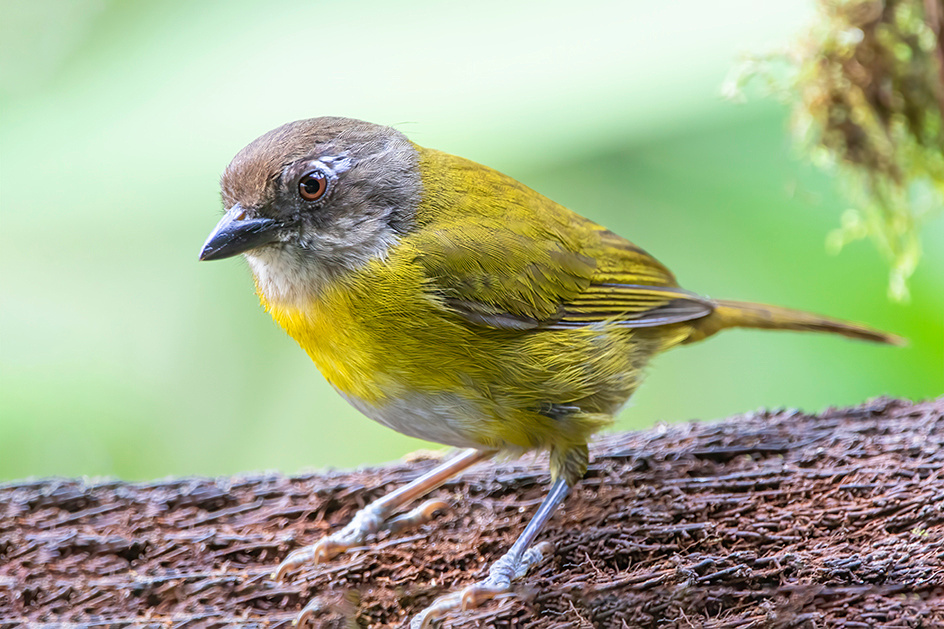
 Common Chlorospingus
Common Chlorospingus

 Emerald Tanager
Emerald Tanager

 Wood Thrush - Another life bird for me.
Wood Thrush - Another life bird for me.
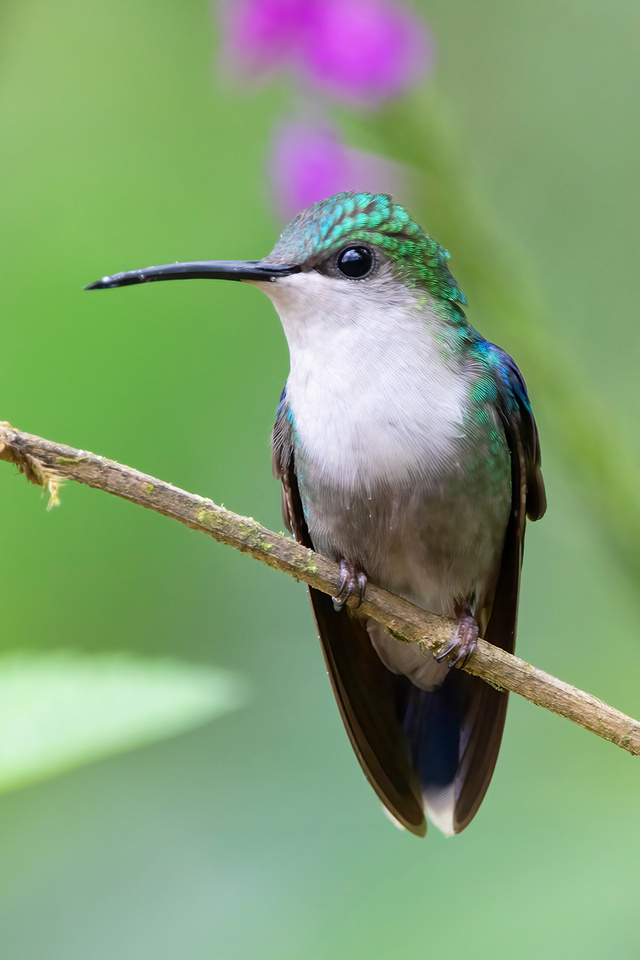

Crowned Woodnymph
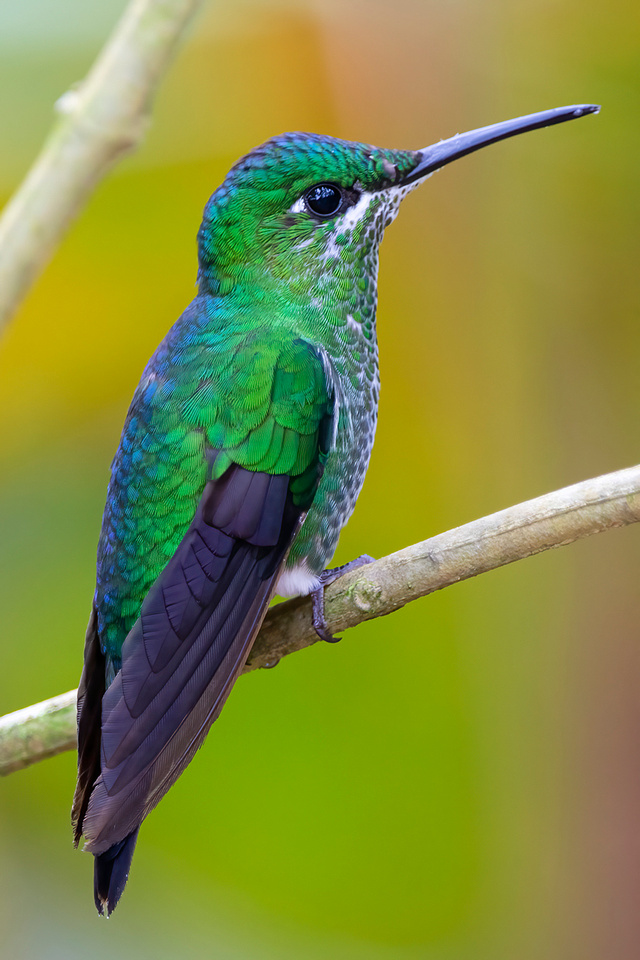

Green-Crowned Brilliant
Next we took to the hills and quickly hiked to a singing and displaying three-wattled bellbird.

 Three-Wattled Bellbird - I was pretty keen to photograph this uncommon bird and was able to capture a displaying male against the sky. We kept following him and eventually he dropped down lower in the canopy and allow a few longish shots with better light and background. Call is like a tiny ringing bell. He tosses the wattles as he sings as part of his display.
Three-Wattled Bellbird - I was pretty keen to photograph this uncommon bird and was able to capture a displaying male against the sky. We kept following him and eventually he dropped down lower in the canopy and allow a few longish shots with better light and background. Call is like a tiny ringing bell. He tosses the wattles as he sings as part of his display.
After another hike down a long ridge we encountered our first southern emerald toucanet and a collared trogon. The ridge was much steeper on the climb back out.


Collared Trogon - We worked hard to finally get this trogon to perch in the open.

 Southern Emerald Toucanet - I ended up with hundreds of images of this species at different locations.
Southern Emerald Toucanet - I ended up with hundreds of images of this species at different locations.
We had a quick local lunch at a local roadside cafe and then went in search of a nesting sunbittern. Along the way we also were able to photograph torrent tyrannulet, a golden-olive woodpecker, and a common tody flycatcher. A very productive day.

 Nesting Sunbittern - Habitat included forested, steep rocky streams
Nesting Sunbittern - Habitat included forested, steep rocky streams
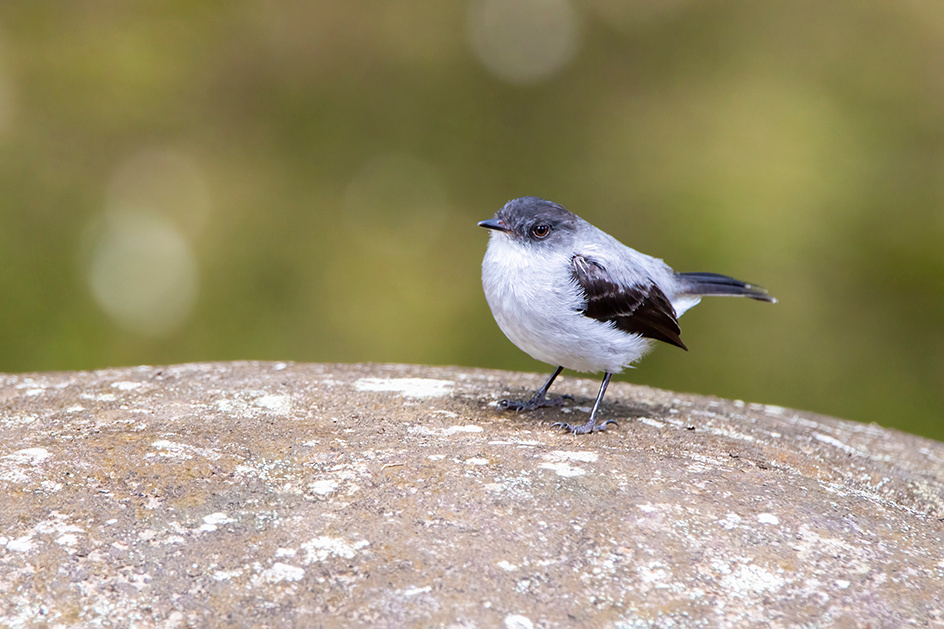
 Torrent Tyrannulet - A small flycatcher inhabiting high gradient streams
Torrent Tyrannulet - A small flycatcher inhabiting high gradient streams
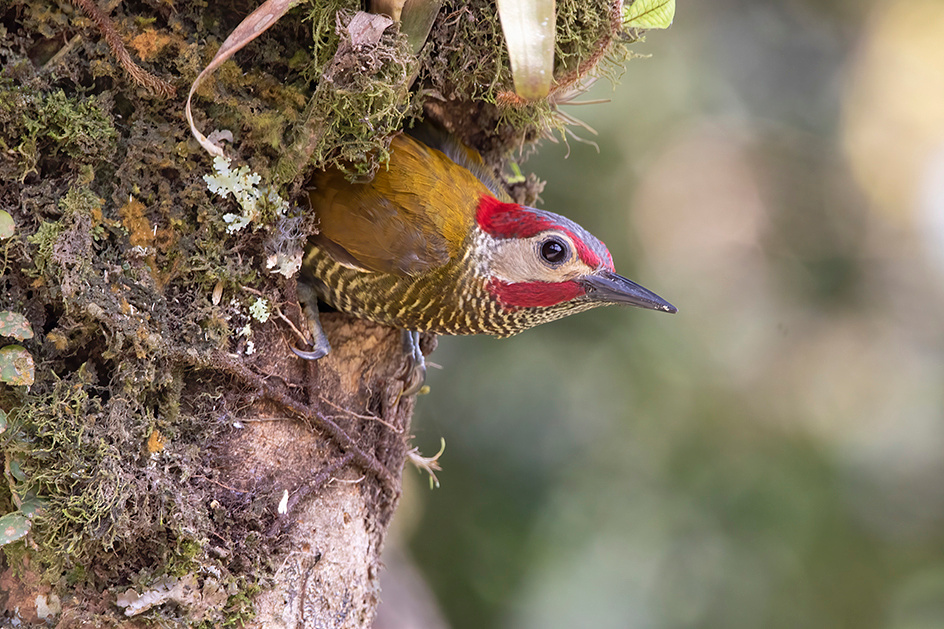
 Golden-Olive Woodpecker - A beautiful woodpecker species
Golden-Olive Woodpecker - A beautiful woodpecker species
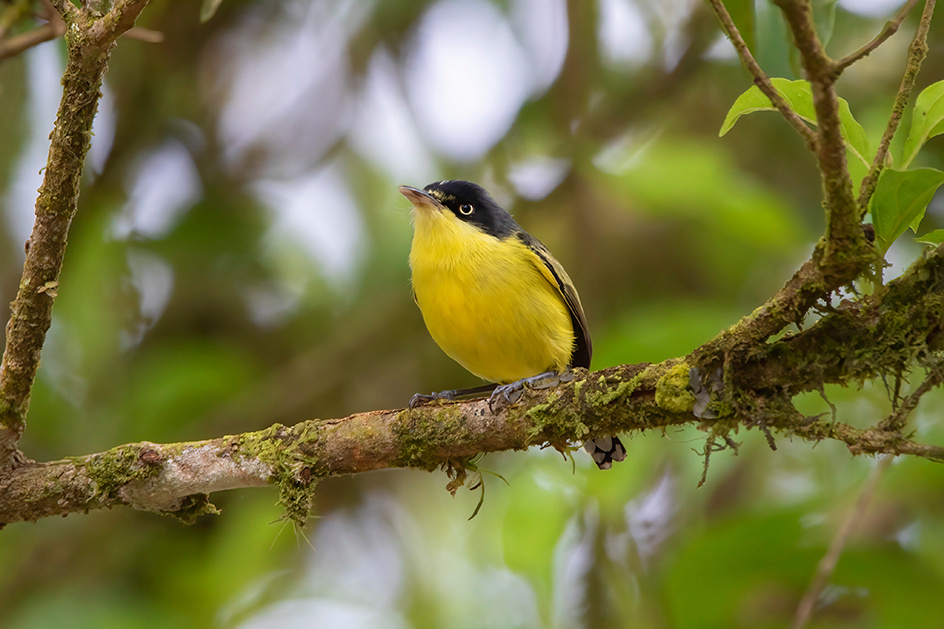
 Common Tody Flycatcher - Common and widespread compact flycatcher
Common Tody Flycatcher - Common and widespread compact flycatcher
I should mention driving in Costa Rica is quite adventurous. Becky did all the driving as she is not enthusiastic about my driving while birding. Our rental car was a very underpowered Toyota Rush. We did not attempt passing on mountain roads. The locals were more spirited in their driving and passing on double yellow lines, hills and blind corners were commonplace. While driving to photograph the bellbird with the guide in the backseat we came around a corner and met a truck coming at us in our lane. I may have verbalized some concern. Becky says a squealed like a little girl. Somehow we avoided death and dismemberment and she and the guide had a good laugh at my expense. Defensive driving is a must. The ability read safety signage in Spanish is also useful.
After trying to load and save a more extended version of this blog three times I was finally able to determine that Zenfolio limits the size of individual blogs, so this is Part One and hopefully the remainder of the tour will be Part Two. Pura Vida!